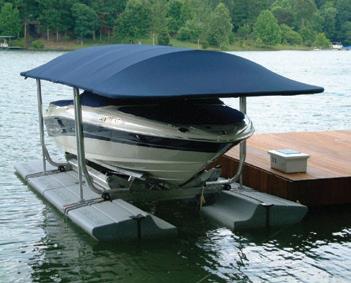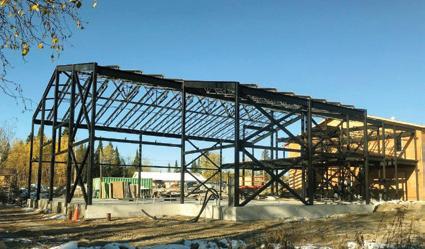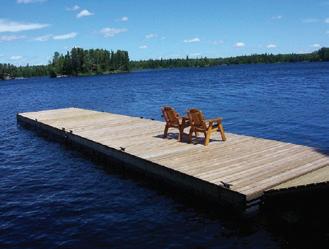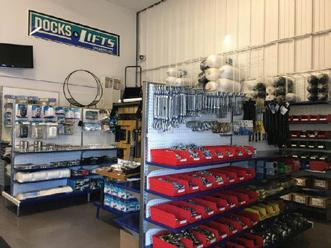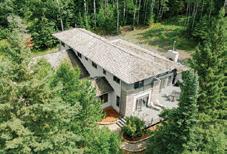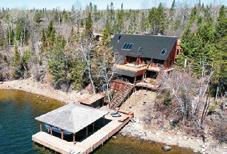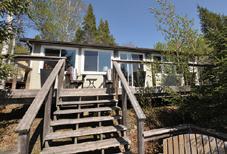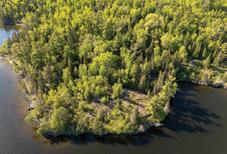






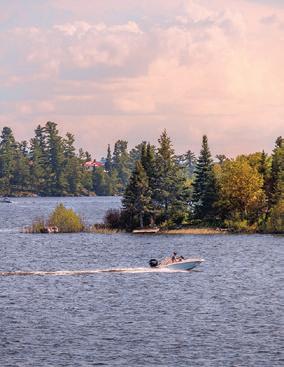
3 LOWDSA
President's Message 3
Executive Director’s Note 4
Our Contributors 5
Mark your calendars 7
Lake time is here and so is the 2024 LakeSmart team 9
LOWDSA 2024 AGM Recap 12
Government notes 13
LOWDSA’s EISP Fund: Financially securing a sustainable future for Lake of the Woods 16
41 Environment
Flowering rush update: Time to take action 41
Engaging Indigenous expertise for water management in Lake of the Woods 45
This is what climate change is doing to our fresh water 48
Treaty #3 takes lead in monitoring initiatives 51
22 In the District
What's happening on your lake? 22
Forging new paths 25
Water level management—international collaboration 27
29
35
53 Living
Treading wisely: Reducing our environmental pawprint 53
Member recipe: Blueberry cheesecake and sweet summer memories 55
56
Celebrating the very small by
&
58 Services
Real Estate Listings 58
Classifieds 59 Home & Cottage Services 60
Directory 62
63


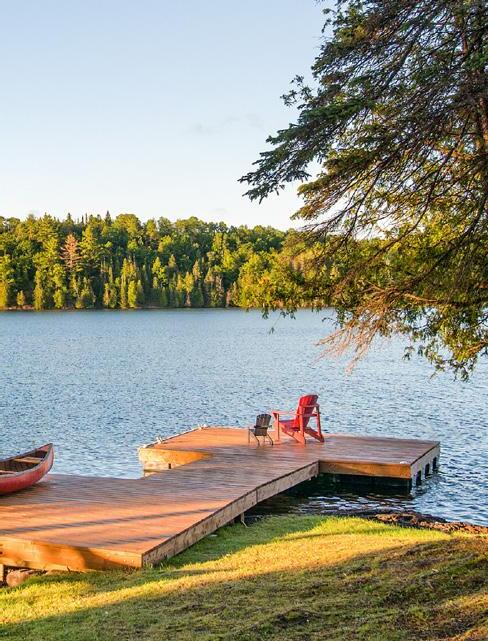
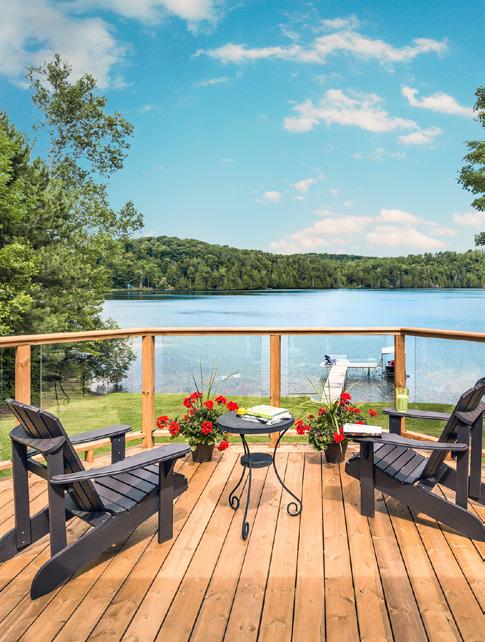

GARTH COLLIER

We’ve all heard the hackneyed phrase that “change is a constant.” At LOWDSA, not only are we welcoming a change in our staffing but, we are also replacing our website and membership platform. These changes are of great significance as they will both have a fresh, modern new look and be more user friendly.
We are very excited to now have Brie McCardle fully on board as our new Executive Director and to once again extend our heartfelt thank-you to Ashley Hoffmeister for her commitment to our Association over the past two years, and in particular for her efforts in building a bridge from the past into the present. Ashley’s applied expertise was integral to our current strength.
Jackie Lowe has given notice that she will not be standing for re-election for a further term. The Board of Directors would like thank Jackie for her very important contributions to LOWDSA. Jackie’s expertise has been instrumental in helping us build a stronger and more efficient Association. Fortunately for us, Jackie has offered to continue sharing her expertise in a less formal capacity. We look forward to continuing our conversations with her.
Our most recent correspondence (May 1) from the Ontario Ministry of Transport indicates that there will be a Public Information Centre (PIC2) in mid-June. Date, time and venue will be advertised on our social media sites. They have also said that there will be a “virtual” option. For further updates go to 4lanehighway17Kenora.ca.
The Ministry of Natural Resources and Forestry invites you to inspect the approved 2024/2025 Annual Work Schedule for the Kenora Forest. These documents are available online throughout the year at nrip.mnr.gov.on.ca/s/fmp-online.
Now that it is boating season, remember that a Pleasure Craft Operator’s Card is required by anyone who operates a power boat. The Operator’s card can be obtained by taking the operator’s course either online or on person.
Mandatory Personal Flotation Device compulsory usage is still being considered by Transport Canada. We are anticipating a mid-summer public consultation period. In the meantime, each person must have a PFD in the boat within quick, easy access.
Nutrient pollution is a key challenge to lakes in the region. Because algal blooms occur where excess nutrients build up in our lakes, it is important to help mitigate nutrient loading by maintaining a healthy shoreline. Plant tree, shrubs, grasses and/ or perennials. Include your favourite plants. This will also mean less work in the future.
That’s all for now. Short and sweet… hopefully unlike the upcoming summer! Enjoy the season ahead.

BRIE MCCARDLE

As the warm breeze whispers through the trees and the waters glisten in the sun, it is with great joy that I extend a warm welcome to our cherished cottagers, visitors and lake residents. I hope everyone had a fantastic transition from ice-off to lake time and are eagerly looking forward to the joy and relaxation that summer at the lake brings.
Each day I see the open water and hear the loons calling, I think to myself, ‘I don't think I could ever get tired of this’. I'm sure that’s a feeling common within our LOWDSA community. The arrival of this season marks the beginning of another chapter, and I am honoured to do it in a new role with LOWDSA as Executive Director.
I’m thrilled to write my first ED note and share my mission rooted in stewardship with you. As you may have seen before I have been around in various capacities. I am really excited to be in this role, representing our Board of Directors, committees, and of course, you, our members. As always, I want to hear from you. There are many versions of lake life, and I can appreciate the different interests of our diverse membership and lake lovers. I welcome any ideas, connections or collaboration opportunities. Please email me at executivedirector@lowdsa.com to connect.
I invite you to join us in our efforts to make a difference. Whether it’s participating in our Environmental Initiatives and Special Project Fund donation drive (see page 16 for more information), volunteering for citizen science zebra mussel monitoring, or taking the best management practices we share into your home—your involvement is invaluable.
This year we are excited to embark on new initiatives and projects that will further enhance the lake experience for all. From educational programs and expanding our reach to buying our very own mobile boat decontamination station, we have a lot going on. Some notable events are two IISD-ELA tour dates, increased presence in Sioux-Narrows-Nestor Falls, a new boat decontamination trailer and new location for Metal and Electronic Waste Collection. We will have so much more going on so be sure to follow us on Facebook or any of our socials to stay connected. You can see more about all of this on the Mark Your Calendar page.
Once again, I want to thank you for your support. We would not be the Association we are today without members with such enthusiasm and passion for lake life. As we all know, the season comes and goes in a blink of an eye so a gentle reminder to slow down, embrace the beauty of our surroundings, the warmth of our community, and the memories that await us at the lake this summer.
Together, we can continue to build a sustainable future for the region and ensure that the magic of the place we all come to enjoy remains for years to come.
Wishing you all a wonderful summer filled with the sound of loons, laughter and cherished moments with family and friends!
Sincerely,

Brie McCardle
publication
PUBLISHED BY
Wake Marketing Inc., 140 Main St. S., Kenora, ON P9N 1S9
Publisher: Mike Greaves, mike@areanewsmagazine.ca
Editor: Leanne Fournier, editor@areanewsmagazine.ca
Art Director: Shayla Smith, shayla@wakemarketing.ca
Design & Layout: Mike Newton, Ashley Pereira
Advertising: Deb Polakoff, deb@areanewsmagazine.ca
The Lake of the Woods area and LOWDSA’s activities take place in the territory of the Anishinaabe Nation in Treaty #3 and the traditional homelands of the Métis Nation of Ontario. The beautiful lakes, shorelines, and environment that we enjoy should be respected for their cultural significance and history.
DISTRIBUTION & MEMBERSHIP
Lake of the Woods Area News is published five times per year and is mailed to LOWDSA members. To receive Area News visit lowdsa.com and become a member today.
TOLL-FREE 1-888-265-9784 PHONE (807) 468-8715
Publication mail agreement #43107013. Printed in Canada.
© 2024 LOWDSA. All rights reserved. The contents of this publication may not be reproduced by any means, in whole or in part, without prior written consent. Statements of fact or opinion are the responsibility of the author and may not represent the view of LOWDSA or Wake Marketing Inc.
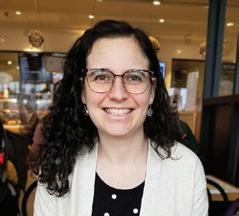
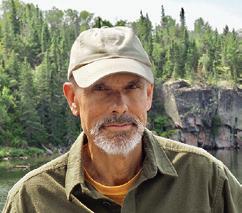
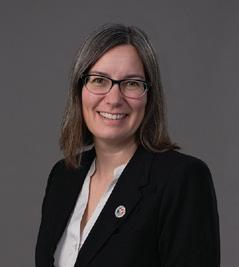
Alexandra Lavictoire is the Acting Executive Engineer at Lake of the Woods Control Board (LWCB) Secretariat. She is also the Canadian engineering advisor to the International Rainy – Lake of the Woods Watershed Board (IRLWWB) and the Canadian co-chair of the Adaptive Management Committee. Alexandra is based in Ottawa, and has been with the LWCB Secretariat for over 10 years. When she is not managing the waters of the Winnipeg River basin, Alexandra enjoys spending time with her family, especially raising her two children in the FrancoOntarian community.
Don Engebretson is a Minnesota native, lifelong Minaki summer resident, and president of The Minaki Conservancy. While battling flowering rush, he has corresponded with and reviewed studies by flowering rush experts across Canada and the United States. A longtime garden and nature writer, his first novel Welcome to Kamini (set primarily in Minaki and Kenora) was published in 2021 by Guernica World Editions, Toronto.
Teika Newton is the International Watershed Coordinator with the Lake of the Woods Water Sustainability Foundation, based in Kenora. She provides climate governance and secretariat support to the International Rainy – Lake of the Woods Watershed Board’s committees, including the Adaptive Management Committee for which she is a past co-chair.
Sumeep Bath
Jacob Boutwell
Garth Collier
Heather Gropp
Sharon Gurney
Chris Herc
Brie McCardle
Drew Monkman
Lori Nelson
Jeff Polakoff
Jacob Rodenburg
Dave Schwartz
PRESIDENT: Garth Collier, Schnarr Lake
PAST PRESIDENT: Christine Semenchuk, Bigstone Bay
TREASURERS:
Carley Fyke, Welcome Channel; Jeff Rempel, Pine Portage Bay
CHAIR, MEMBERSHIP: Wanda Kabel, Sammons Bay
CHAIR, GOVERNMENT AFFAIRS: Don Parfitt, Winnipeg River
CHAIR, ENVIRONMENT: Adam Blake, Corkscrew Island
DIRECTORS AT LARGE: Sean Campbell, Woodchuck Bay
Martha Mankewich, Nanton Island
Bob Stewart, Longbow Lake
Trevor Templeton, Minaki
EXECUTIVE DIRECTOR: Brie McCardle, (807) 468-8715 executivedirector@lowdsa.com
ASSISTANT ED: Alena Collier, (807) 468-8715 alena@lowdsa.com
P.O. Box 1160
Kenora, ON P9N 3X7
EMAIL: info@lowdsa.com
TOLL-FREE: 1-888-265-9784
PHONE: (807) 468-8715
M N LOWDSAssoc
P S LOWDSA V Lake of the Woods District Stewardship Association
The summer photo contest winner is David Bryan Wells who writes:
"We love our time at Lake of the Woods for the moments we get to spend with family. In the summer of 2023, we had a big family reunion at the Lake and five of the young cousins took the opportunity to jump in together off the dock at the south end of Wildcat Island.”
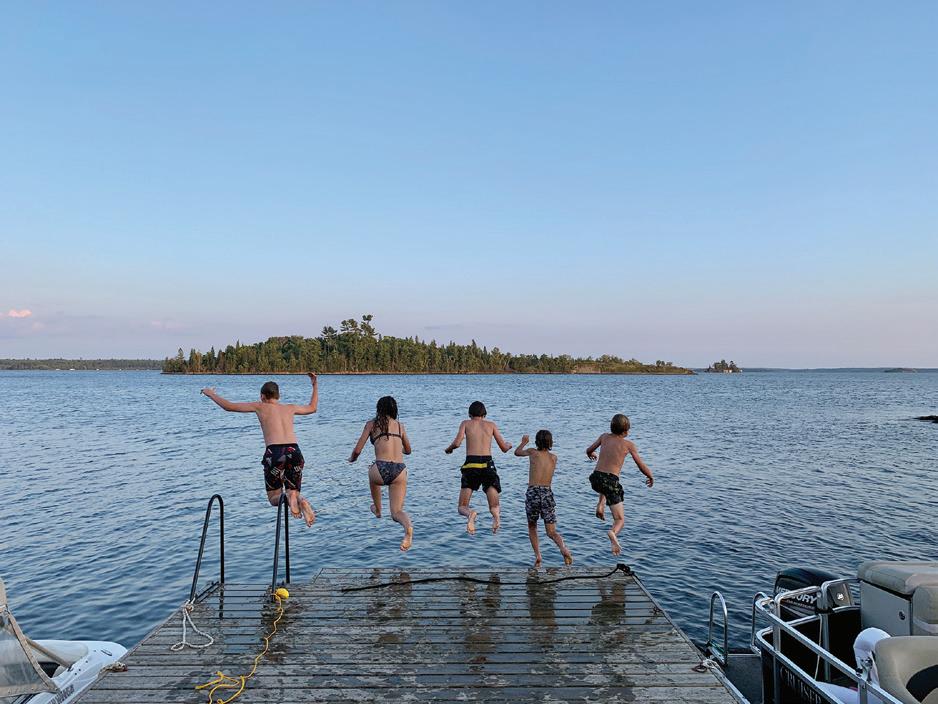



LakeSmart and LOWDSA’s summer event schedule is laid out below. All information is subject to change. Members will be notified of any changes as soon as possible via eNews, our website, and social media platforms. To sign up for dock visits, any events or for more information, email Mimi Mastromatteo, LakeSmart Lead at mimi@lowdsa.com.
LakeSmart at Matiowski Farmers’ Market
Come see us under or around the harbourfront tent 8:30 a.m. to 2 p.m. every Wednesday.
Stop by and learn about topics ranging from sustainability and environmental conservation to community initiatives and beyond. Our friendly team is here to answer your questions, provide resources, and inspire positive action.
Boat Decontamination Station
CLEAN, DRAIN, DRY. Help protect our waters and preserve the beauty of our ecosystems with our boat wash services. Don't let invasive species hitch a ride on your vessel and wreak havoc on delicate aquatic environments. Our thorough and eco-friendly wash removes potential threats, safeguarding the biodiversity of our waterways.
JULY 2
Join us in restoring the beauty of our shorelines and protecting lake life by participating in our shoreline cleanup events. The more hands the better.
Locations, dates and times will be posted on social media and sent out via eNews.

AUGUST 8 & 19
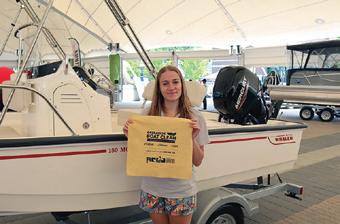
JUNE TO AUGUST
Dock visits
LakeSmart will be conducting dock talks with shoreline residents, invite the team to stop by your neck of the woods if interested. We would love to come chat, check out your property, and answer any questions you may have.
We’ll be heading out to ELA on August 8 & 19 from 8 a.m. - 5 p.m. Sign up to spend a day learning about the area and all the neat things they do. Bring a lunch. Email: communications@lowdsa.com.
August 8: From Kenora Moncrief Construction Sports Centre
August 19: From Sioux NarrowsNestor Falls, Northern Ontario Sportfishing Centre
AUGUST 8 - 10
Keep your eye out for the LakeSmart booth at the KBI this summer. While enjoying recreational activities LOTW has to offer, make sure to also be aware of how to properly sustain lake life. Come and chat!
AUGUST 8 & 15
Come see us in Sioux Narrows Northern Ontario Sportfishing Centre for a chance to listen and learn from our team.
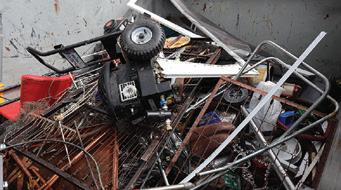
AUGUST 10, 10 A.M. - 1 P.M. FREE Metal
Drop off any metal or electronic waste at Bowman Electric Keewatin Memorial Arena. It is a great way to get rid of junk and keep the environment healthy. Boat and car access available.
Stay tuned for tree planting events we will be arranging this summer. Whether you're passionate about conservation, looking for a fun outdoor activity, or simply want to give back to nature, our events offer the perfect opportunity to get involved. Together, we can contribute to a greener and healthier environment by planting trees in and around the Kenora area. Potential dates are to be determined.
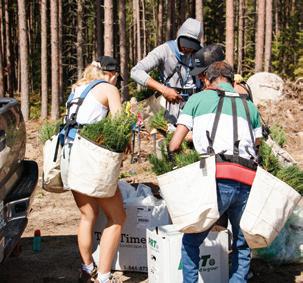





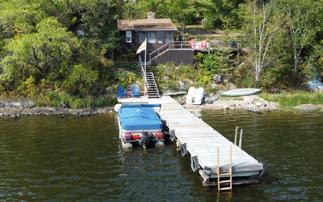

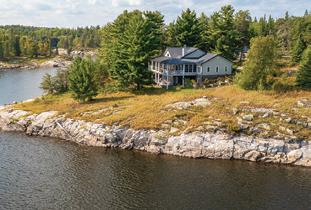



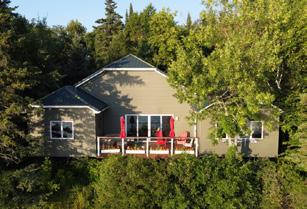

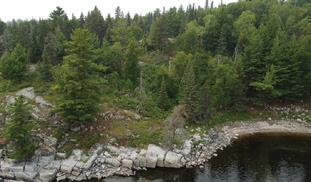
We are delighted to introduce a dynamic team of ambitious young women for the upcoming 2024 season, comprising both university students and, notably, the first high school student ever to join our staff. All members are from the Kenora area, bound by childhood friendships that foster a strong sense of camaraderie. Their energy, creativity, and passion are truly inspiring, driving a commitment to innovation and making a significant impact in the Kenora area. As we look forward to the 2024 season, we are excited to see what’s in store for LakeSmart.
Returning to the Lake of the Woods District Stewardship Association are Emilia (Mimi) Mastromatteo and Tessa Penner, and joining us this year are Cass Wagenaar, Ashley Vogrig, and Aneira Olson. Mimi will be the first ever ‘LakeSmart Lead’ as a returning student that excels in planning and management. Tessa and Aneira will be additions later in the season when school is out as Tessa is following her dream of becoming a teacher and Aneira is our first ever high school student.
Here’s a few words from each of our team members.
Emilia Mastromatteo
I have long cherished the breath taking beauty of lake life and I am delighted to re-join LakeSmart, a program close to my heart. This year, I am particularly excited as I step into a leadership role within the team.
After completing my second year as a varsity athlete at McGill University, studying Cell Biology and Anatomy in Biomedical Sciences, I am excited to bring a renewed commitment to enhancing our initiatives. This season, my focus will be on expanding the programming we developed last year, aiming to educate our community about preserving Lake of the Woods and advancing our vision as a non-profit organization. I look forward to making a significant impact on our community engagement efforts and continuing our commitment to environmental stewardship.
Ashley Vogrig
It has been a privilege to grow up, spending time at my family cabin while appreciating the nature that Lake of the Woods and other surrounding areas had to offer. Having the opportunity to be on the
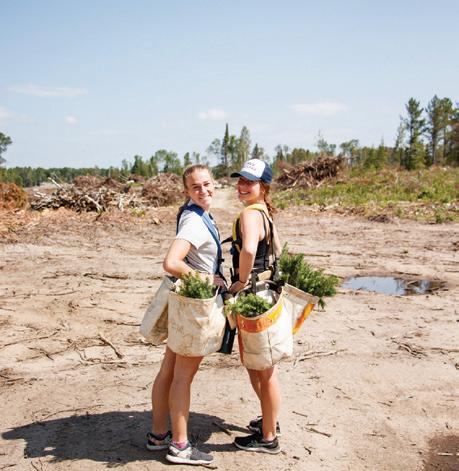
LakeSmart team will allow me to learn more about where I grew up, adjacent regions, and discover tools to help preserve the land for future generations.
I recently completed my second year in History and Theory of Architecture with a minor in Heritage Conservation at Carleton University. My love for architecture affixed a connection to
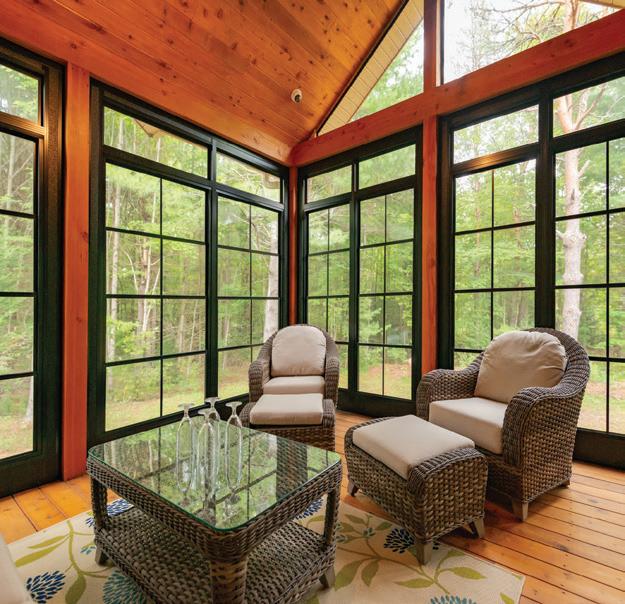


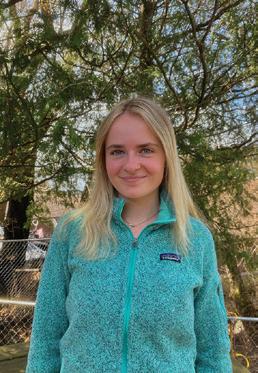

the environment through learning about different approaches of using and respecting nature to create some of the most amazing buildings around the world. With a focus on heritage conservation, my interest in environmental conservation grew and became another important aspect in my education. Architecture plays a big role in any ecosystem, so I believe gaining knowledge through LOWDSA is an asset that I will be able to apply through an environmentally focused perspective in my later studies.



Being exposed to the lake from such a young age allowed me to experience all the wonderful features it has to offer. My passion for the environment stemmed from this as I had much appreciation for nature and the outdoors. I enjoy camping, swimming, fishing, and canoeing which are all things that require a healthy lake ecosystem. I am very grateful for the opportunities I have had on and around Lake of the Woods and want to help sustain this region for generations to come.
Lake of the Woods, Winnipeg River, Lac Seul, English River
• Web Site (updated each workday): www.lwcb.ca
• Notice Board (updated weekly): Level forecast and important updates on basin conditions; subscription option for email updates.
• Public Open House: annually in June
• Contact Staff: Call: 1-800-661-5922 Email: secretariat@lwcb.ca
I have recently finished my first year of environmental science at Trent University in Peterborough, Ontario. Throughout the year I learned so much about the importance of sustainability and ecosystem protection and look forward to putting it into practice.
Stay tuned to hear more about Tessa and Aneira when we welcome them on board later this summer.
A year of five LakeSmart students is another first, and we could not be more excited. The team is eager and holds a variety of strengths. They are willing to learn to better educate you, our members, with a goal to make this season the best one yet. It is so important to build a strong group of people who want the best for the land we live on and LOWDSA is a great first step in putting the environment first, especially with this group of students.
LOWDSA welcomes all of the team on board. an




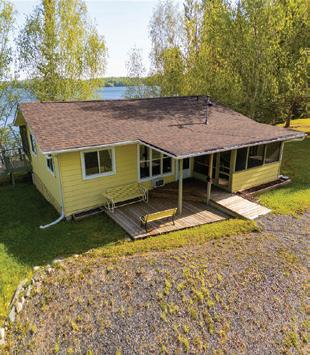
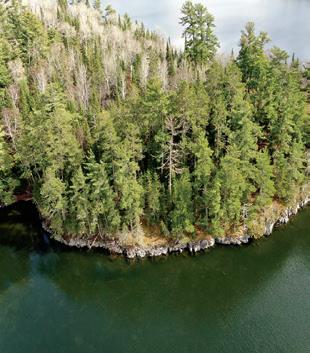
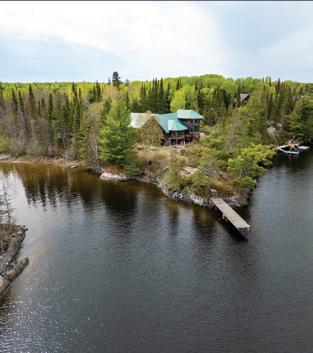
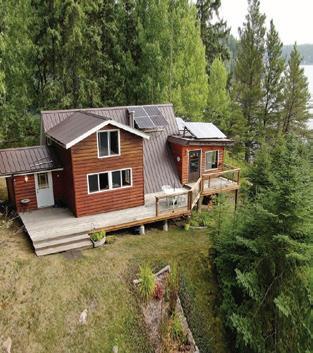

On May 15, 2024, LOWDSA held its Annual General Meeting (AGM). The event started with an acknowledgement of the Anishinaabe Cree and Métis peoples, whose traditional lands encompass the Lake of the Woods area, setting a tone of respect and stewardship for the meeting.
President, Garth Collier provided updates on LOWDSA’s significant activities throughout the year, emphasizing the successful "Celebrate Lake Life" event that replaced the traditional summer celebration due to pandemic constraints. He also highlighted the forestry updates with specific reference to the Whiskey Jack and Kenora Forests' Annual Work Schedule, reflecting the ongoing commitment to sustainable forest management. Garth acknowledged Carol Leduc’s departure after many years of service on the Board and welcomed Teika Newton as the new International Coordinator for the Lake of the Woods Water Sustainability Foundation.
The financial report presented by Jeff Rempel outlined a challenging fiscal year with a slight deficit, attributed to increased operating expenses. This part of the meeting underscored the financial transparency and accountability that LOWDSA aims to uphold.
Key committee reports included:
• The Membership Committee, led by Adam Blake, noted an increase in membership fees and a continued effort to engage a younger audience, highlighting the successful integration of social media in outreach efforts.
• The Government Affairs Committee, chaired by Don Parfitt, addressed several regional issues including the management of the Trans-Canada Highway, forestry practices, and water levels. They are particularly focused on educating and informing members about these critical topics.
• Brie McCardle, heading the Environment Committee, detailed their proactive approach towards environmental stewardship, emphasizing the LakeSmart program’s success in educating the public.
The meeting also introduced expansions to the seedlings project and highlighted the importance of the Environmental Initiatives & Special Project Fund, which aims to enhance LOWDSA’s conservation efforts. These projects help to foster greater community involvement and environmental awareness.
Elections were held for the Board of Directors with several members re-elected; Bob Stewart, Chelsea London, Don Parfitt, Jeff Rempel, Trevor Templeton, and a new member, Sean Campbell, was welcomed aboard. This reflects LOWDSA’s commitment to continuity and fresh perspectives in its leadership.



The meeting concluded with a look forward to the year ahead, with plans to continue expanding educational outreach and community engagement initiatives. The president thanked all members for their continued support and participation, emphasizing the collective effort required to protect and steward the Lake of the Woods area.
The LOWDSA’s 2024 AGM highlighted a year of adaptation and progress amid challenges, setting a robust agenda for continuing to protect and enhance the environmental quality and community life around Lake of the Woods.
Thank you for 62 wonderful years! an
BY BRIE MCCARDLE



A representative from the Ministry of Transport (MOT) has informed us that there will be an upcoming public information session during the first week of July. This meeting will focus only on Section 2 which runs from Shoal Lake 673 to Rush Bay Road, a distance of 8.5 kilometres. The specific date has not yet been cleared with the Department, but it will not be on a weekend. As soon as we know the time and date, we will have that shared to our members via eNews updates. Both in person and virtual formats will be possible. MOT will advise stakeholders of the date and time via available media.
The Forest Management Plan establishes long-term strategic direction and identifies short-term operational goals for managing forest resources on the Whiskey Jack Forest management unit. As you may know, there is a 10-year plan in place, which is circulated annually. The Ministry of Natural Resources and Forestry invites you to inspect the approved 2024/2025 Annual Work Schedule for the Kenora Forest. These documents are available on-line throughout the year at nrip.mnr.gov.on.ca/s/fmp-online.
If you are having any issues with the plan, they are open to questions.
Progress in Ontario is well underway with the goal of highspeed internet at home, work and in communities by 2025. The first four of seventeen Treaty #3 communities are now hooked up—3,800 houses/business service, 2,300 of which are Indigenous. Communities are Naicatchewenin First Nation (Devlin area), Wauzhushk Onigum Nation (south— adjoining Kenora), Couchiching First Nation (east adjacent to Fort Frances) and Wabauskang First Nation (west adjacent to Perrault Falls area).

The Lake of the Woods Control Board’s mission is to, ‘To regulate the water levels of Lake of the Woods and Lac Seul, and the flows in the Winnipeg and English Rivers downstream of these lakes to their junction, for the benefit of all users and interests.” Water levels are constantly changing, and it is largely dependent on the weather. We are sharing updates as they come out and have them linked on our website. Recently we have asked for communications to come in laymen terms for the benefit of our memberships understanding. If you have any questions or concerns you can also visit their website for more information or email secretariat@lwcb.ca. an
BY MONA BROWN
of the budget.
• A transfer to family members may have little effect if the $250,000 of exclusion from the higher rate is an annual exclusion.
If you are a couple and you have $500,000 of capital gain immediately excluded from the higher rate, you might pay nothing extra.
If your gain
What is a capital gain?
A capital gain is the difference between an asset's cost and its total sale price. An asset could be a cottage, an investment property, a stock or a mutual fund.
The introduction of higher taxation for capital gains has captured the attention of many property owners in our area. The Lake of the Woods district boasts a vibrant community of cottage owners with a wide range of backgrounds creating diverse experiences. We encourage you to consult with your financial or legal advisor on your properties as the tax increase depends on personal circumstances. You can find out more about your situation by taking the fair market value of your place (get an appraisal) minus cost base (purchase price and capital additions), which equals the capital gain that you will be taxed.
At our Annual General Meeting, Mona Brown, a government affairs committee member and tax lawyer, gave a brief presentation. You can watch the recorded version on LOWDSA’s YouTube channel to learn more about it: youtube.com/watch?v=kxWJ9UUhGPk.

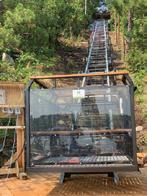
LOWDSA encourages you to write your local MP explaining the negative impacts this tax has on you. If you are based in the Kenora riding; Eric Melillo MP’s contact information is below:
Main Office - Kenora
308 Second Street South Unit

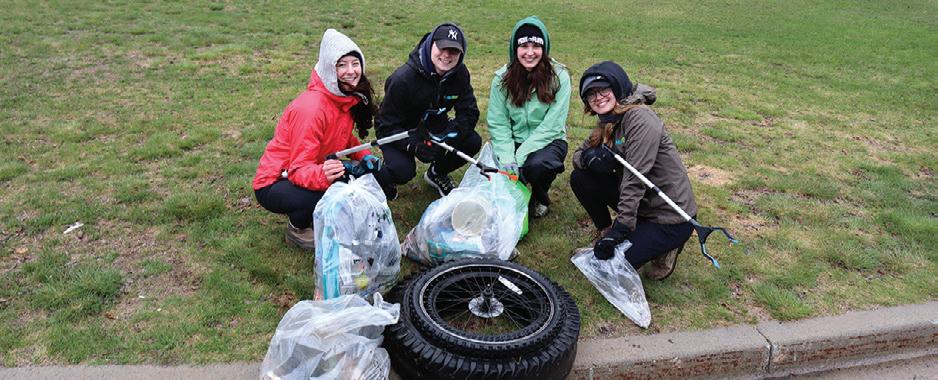
BY BRIE MCCARDLE
The Lake of the Woods District Stewardship Association (LOWDSA) is calling on community members and visitors alike to contribute to its Environmental Initiatives & Special Projects (EISP) Fund. This crucial initiative supports LOWDSA’s numerous environmental programs, which are instrumental in maintaining the pristine nature of the Lake of the Woods region for present and future generations.
The EISP Fund was established to bridge the financial gap that cannot be filled by membership fees alone. Despite successful corporate sponsorships and some government funding, these sources are variable and do not fully cover the costs associated with maintaining LOWDSA's highly regarded initiatives,
including the award-winning LakeSmart program. Contributions from members and supporters are essential for the continuity and expansion of these valuable environmental initiatives.
The area we come to enjoy remains one of the most beautiful and beloved landscapes, cherished by both residents and visitors. The region’s sustainability depends heavily on informed stewardship and responsible management of its natural resources. Your contributions to the EISP Fund empower LOWDSA to continue its work in environmental education, advocacy, and practical sustainability efforts. By donating, you play a direct role in safeguarding the natural beauty and ecological health of the area.

Contributions to the EISP Fund significantly support the LakeSmart program, a cornerstone of LOWDSA's environmental initiatives. This innovative program is implemented by a team of environmentally focused post-secondary students, who dedicate their summers to educating the community on sustainable practices around the lake. The funds directly support a variety of projects under the LakeSmart banner, including invasive species biocontrol methods.
Funds have previously facilitated the release of beetles as a natural method to control the spread of invasive purple loosestrife, a project that has proven effective in preserving native biodiversity. Such biocontrol efforts are crucial for managing and mitigating the impact of invasive species in a sustainable manner.
Additionally, your contributions enable the expansion of LakeSmart's reach through initiatives like boat decontamination (formerly referred to as boat wash) stations and dock talks. By funding necessary materials, these projects directly engage the community with practical, hands-on solutions to environmental challenges. Boat decontamination stations are essential for cleaning boats to prevent the spread of aquatic invasive species, while dock talks provide critical advice and resources on environmental best practices during informative sessions at various lake docks.
By funding these projects, your donations not only support operational costs, but also enable LakeSmart to innovate and enhance its offerings. Each contribution helps LOWDSA to provide the necessary resources and materials needed to maintain and expand these vital environmental projects, ensuring LakeSmart can continue its mission of educating and empowering the community for a sustainable future.
Donating to the EISP Fund is straightforward. Visit the LOWDSA website at lowdsa.com/campaigns/eisp and click ‘Contribute Now’ to make your donation. Every contribution, large or small, helps to ensure the continued success of LOWDSA’s environmental programs and the preservation of the Lake of the Woods region.
Your support for the EISP Fund not only contributes to ongoing and future sustainability projects but also ensures that LOWDSA can continue to be a leader in environmental education and stewardship. Join us in this vital effort to maintain the ecological integrity and beauty of our beloved Lake of the Woods— contribute today! an













Our restaurant provides a unique experience for all. With high-quality ingredients our chefs create extraordinary food served in a beautiful and unique atmosphere.
Pick-up from the Kenricia Road landing is available Wednesday through Sunday at 5:00 p.m. Cost is $120 return, must be prearranged; maximum 10 guests. Parking at the landing is free.
One of the greatest parts of lake life are the stories shared around the fire…remember that sunset? The night Aurora Borealis lit up the sky? All those great hikes deep into the forest? Maybe an especially delectable meal that brought everybody together around the picnic table. Oh and that fish that got away! Or maybe just the everyday experiences that are the foundation of your family’s lasting and irreplaceable memories at the lake.
These are all great stories that connect us…and we want to read them! The Area News is always looking for member stories. All we need is your rough draft of 800 to 1,000 words, some great high-resolution photos, and we’ll help make it the best story it can be for our readers and your families and friends.
It’s always a keeper. If you have such a story to share, please email editor@areanewsmagazine.ca. We would love hear from you!
Association and club news wanted too
We are also always looking for club and association news and updates about what’s happening on the lakes, rivers and communities throughout the region. Email communications@lowdsa.com.




Your continued support of LOWDSA's programs and initiatives does make a difference.
Member Name: LOGIN EMAIL:
Alternate Email: Address:
Home Phone:
Cottage Phone:
Mobile Phone:
m YES, send my renewal notice by email
Use your smartphone camera app to scan this QR code and renew your LOWDSA membership online.

You can also contribute to our EISP Fund, purchase pine seedlings, and order gift memberships while you’re there!
Renew by phone: 807-468-8715 or 1-888-265-9784
Renew Your Membership
Renew by email: membership@lowdsa.com Membership Renewal Renew online, or use this form to renew by mail or email.
You can choose between a Full Membership (magazine mailed) or a Virtual Membership (digital magazine).
»
|
Kenora: May 18, 2024 10am - 1pm
Sioux Narrows: May 24, 2024 10am - 1pm
Help reduce our carbon footprint while expanding your own patch of forest. Please order your seedlings by May 5, 2024.
m Clearwater Bay (Firehall) m Storm Bay Rd. (Firehall) # of bundles (of 15) __________ at $15 each
A donation of $5 from each member would support an entire LakeSmart position and contribute to LOWDSA’s mobile boat wash station! Contributions to the EISP Fund can be made online any time at lowdsa.com/campaigns/eisp.
m $250 m $100 m $50 m $25
m Other $_____________________________
TOTAL $
To purchase multiple gift memberships, please attach each individual’s contact information to this contact form.
m Full Membership, $60 m Virtual Membership, $52
Recipient’s Name: _______________________________
Recipient’s Email: _______________________________
Recipient’s Address: ______________________________
m Please send give card with message:
TOTAL $ GRAND TOTAL $
Payment Options
» Cheque payable to LOWDSA or call 1-888-265-9784
» Pay by credit card:
(mm/yy) CVC# _______




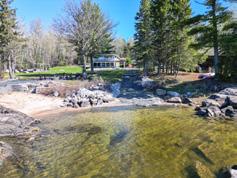


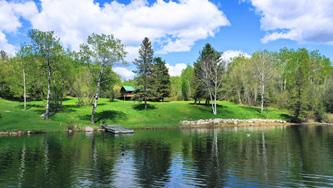







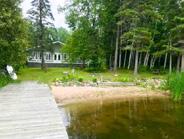








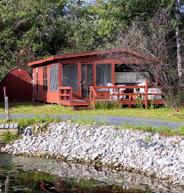


















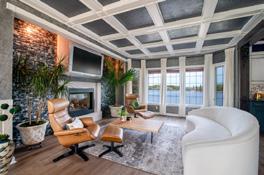







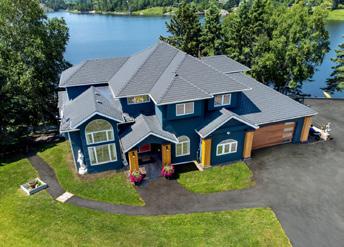

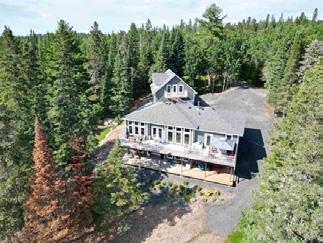







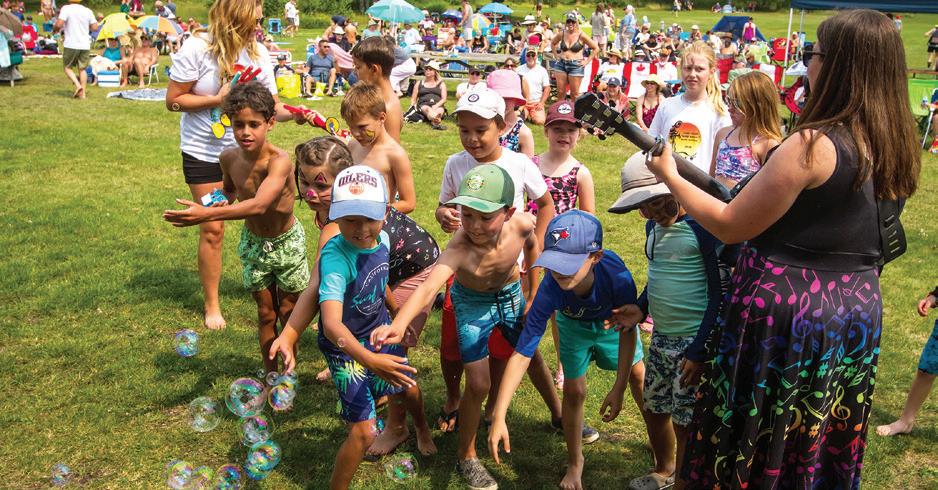
Kenora is celebrating summer! Whether you're a local, a seasonal resident or just here for a visit, be sure to check out these fantastic events.
JUN 14 AT GARROW PARK Party in the Park
JUN 21 AT ANICINABE PARK Bimose - Honouring our Graduates Pow-Wow
JUN 22 IN DOWNTOWN KENORA Kenora Pride March & BBQ
JUN 29 AT JARNEL CONTRACTING PAVILION One Night in Kenora
JUL 1 ON THE HARBOURFRONT Canada Day Festivities
JUL 5 AT ANICINABE PARK Movies in the Park
JUL 13 AT MATHESON ST PIER Bier on the Pier
JUL 14 AT GARROW PARK Movies in the Park
JUL 20-21 AT MEMORIAL PARK (MUSE) LOWAC ArtsFest
JUL 27 AT JARNEL CONTRACTING PAVILION Lakeside Live Music Festival
JUL 28 ON CONEY ISLAND Coney Island Music Festival
AUG 2-4 AT JARNEL CONTRACTING PAVILION Shake the Lake
AUG 16 AT OLD KEEWATIN BALLFIELD Movies in the Park
AUG 22-24 AT KENORA CURLING CLUB Kenora Agricultural Fair
AUG 31 AT NORMAN PARK Movies in the Park
SEP 13-15 AT BREWER’S VILLAGE Ribfest
SEP 14 AT KENORA CURLING CLUB Rotary Lobsterfest
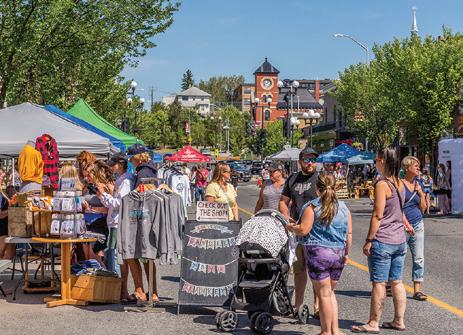

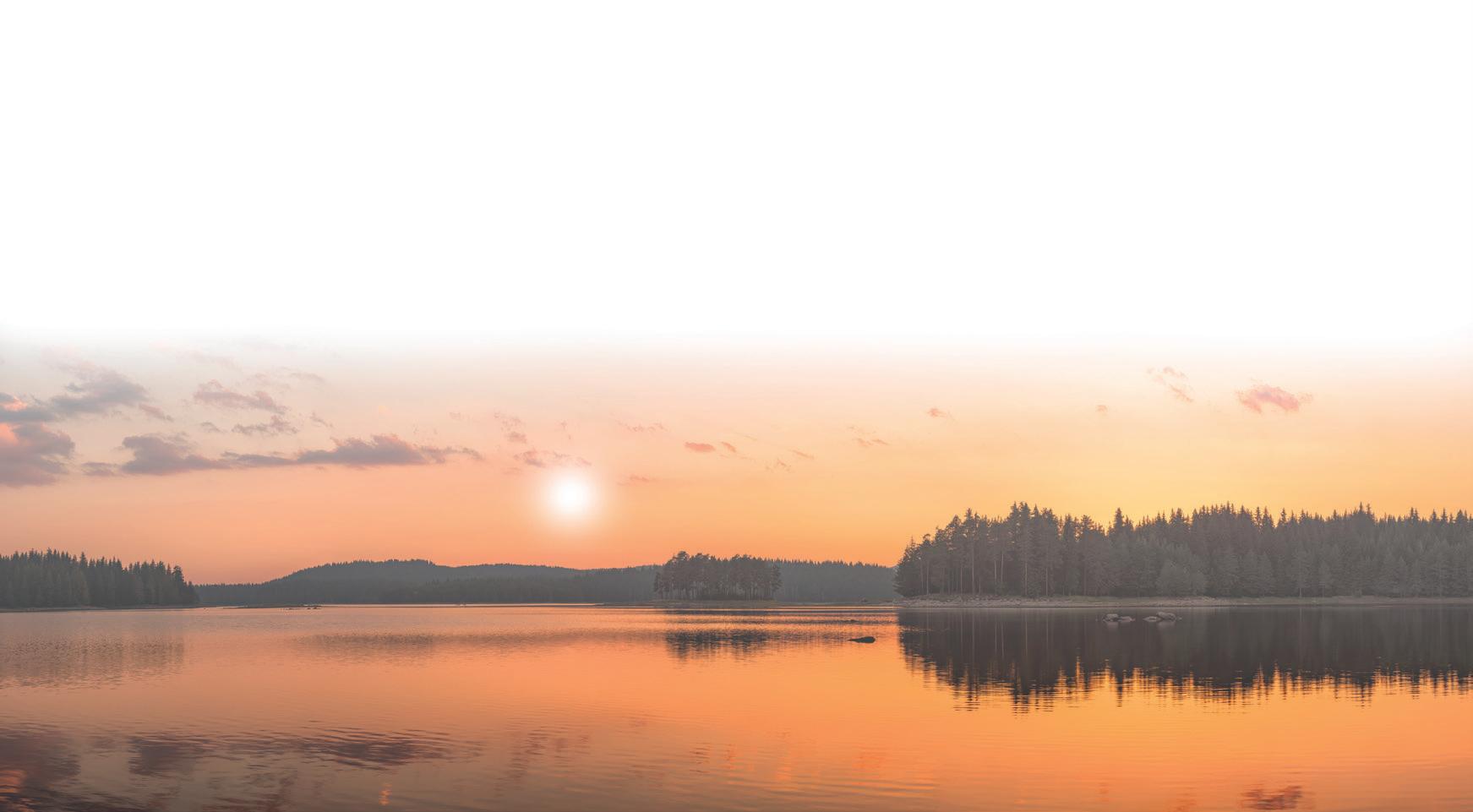
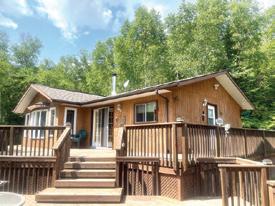









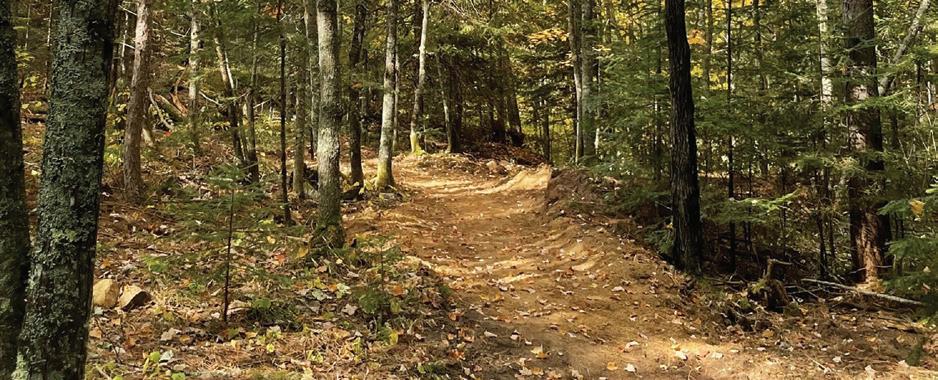
BY HEATHER GROPP, COMMUNITY DEVELOPMENT OFFICER TOWNSHIP OF SIOUX NARROWS-NESTOR FALLS
The nature that surrounds us is our greatest attraction and source of much of our inspiration. We truly are fortunate to call this place home. In Sioux NarrowsNestor Falls we are passionate creating opportunities for residents, and visitors alike to discover what unforgettable experiences nature can provide. Therefore, we have been actively forging paths through the forest to create new and unique ways to experience our region.
Picture yourself flying through the forest on two wheels. It is a nature experience that is new and unlike anything we have previously offered in our small community. Sioux Narrows-Nestor Falls offers stunning views and dynamic topography that is ideally suited for the development of world-class mountain bike trails. In 2019 we commissioned a Bike Trail study, which was adopted in 2020. The study
contains 10 phases and has the potential to result in bike trail development from Caliper Lake Park in the South to our northern most municipal border near Rushing River Provincial Park. Phase I of these trails was completed and opened in October 2023.

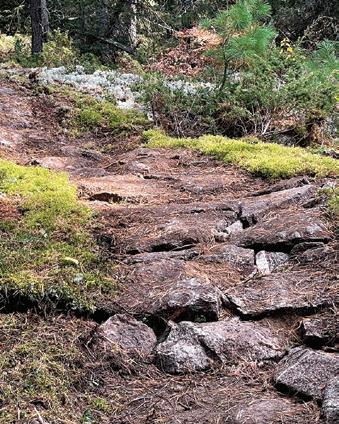
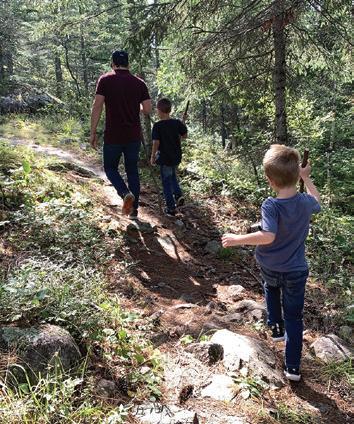
Located in Nestor Falls, near the existing Red Pine trail system, these new trails create an experience that caters to families wishing to experience some remote wilderness—without being too remote—and offering multiple options for choosing the appropriate distance and difficulty in a stacked loop and flow trail format. In 2024 we are excited to grow and expand on these initial trails, adding a skill development park and up to 10 kilometers of additional riding trails.
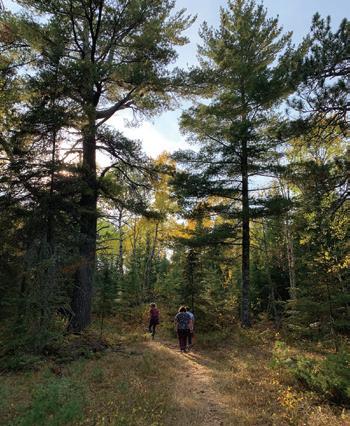
If you prefer to stay on two feet, there are five local hiking trails that cater to a wide range of abilities and provide unique vantage points into the heart of the forest (and community). Hikers in our community will be impressed by the well-maintained trail system that makes traversing the rugged terrain by foot not only possible, but enjoyable as well. Join a community trail walk to step back in time, learn about the footprints have been left before, and connect with nature on a different level. This summer we encourage you to visit snnf.ca/trails or to join the Sioux Narrows-Nestor Falls trails group to learn about new trail experiences and learning opportunities, to check out trail conditions, and to watch for additions as we grow and expand our network.
We are excited to grow and expand our trail networks and invite you to come along on the journey with us. We look forward to seeing you on the trails. an
JEFF POLAKOFF, LOWDSA REPRESENTATIVE, LAKE OF THE WOODS CONTROL BOARD
Conditions in the Winnipeg River basin, including Lake of the Woods, saw a return to more normal precipitation levels during the spring of 2024. This was a welcome change to the persistent drought conditions that the basin had been experiencing for many months. The increase in precipitation replaced much of the ground moisture that had been lost and has reduced the concern for continued dry conditions this summer.
Spring began with low inflows into Lake of the Woods because of the record low snowpack at the end of winter in the basin. Conditions changed rapidly, however, when the basin received high levels of rainfall in the third week of May with some areas receiving up to 75 mm of rain in one day and the basin receiving between 100 – 200 per cent of its normal monthly level of precipitation in just a few days.
This rainfall resulted in high inflow from Namakan and Rainy Lakes located in the southern part of the basin in both Canada and the U.S. which flow into Lake of the Woods through the Rainy River. This resulted in water levels rising rapidly on the Lake and outflows at the Norman Dam were increased to slow the rate of rise while balancing the upstream and downstream interests on the Lake and the Winnipeg River. As I write this article in the first week of June, the lake level was 323.06 m (1059.91 ft), a high normal range for the time of year with the levels of inflow beginning to stabilize.
The water level strategy for the summer of 2024 is for the gradual adjustment of the Lake of the Woods and its outflow to the Winnipeg River with a target lake level range in July of 323.1 to 323.3 m (1060.0 to 1060.7 ft). This is slightly above the preferred summer level as recommended by LOWDSA of 323.0 m (1059.7 ft) as well as the lake level data on your nautical charts but reflects the current conditions of above normal inflow into the lake. The inflows and levels will be monitored closely for adjustment based on conditions. As usual the target of stable July levels will be followed by a gradual decline in August as we head into fall and prepare for freeze up.

The Winnipeg River Drainage Basin covers a lot of geography in both Canada and the United States, and the Canadian Lake of the Woods Control Board is joined by other agencies, private organizations and academic institutions in managing water resources in the basin. The International Rainy – Lake of the Woods Watershed Board (U.S. and Canada) supervises the regulation of Namakan and Rainy Lakes which provides about two thirds of the inflow into Lake of the Woods.
While the two organizations have always worked closely, the collaboration between them is increasing in areas such as research, adaptive management and public communication. This closer working relationship is intended to improve water regulation capacity, knowledge and public engagement as water level management becomes more challenging. Stay tuned for updates on this increased collaboration within our watershed.
Have a great summer! Please keep a close watch on local lake level conditions and remember to consider the varying levels of the lake due to such factors as wind tides. For up-to-date information on water levels and the work of the Control Board please visit the website at lwcb.ca. an





by Jacob Boutwell

In my last article, I talked about the importance of creating a sustainable story; a narrative that we can fit our lives into, to locate ourselves on a path that leads to a sustainable future. In this article I want to focus on a very important part of that story: relationships.
The planet can be understood as a network of relationships. From the cells in our bodies, to the wild ecosystems that surround us, to the great weather cycles—the unique components of our biosphere interact with one another. The action of any one creature has effects, positive or negative, on some other creatures.
When we think about what kind of relationship humans have had broadly with the rest of the earth, we often see an abusive one. The kind of relationship where one is always thinking of themselves and taking at the expense of others. We extract natural resources to grow our economies, while at the same time diminishing the riches of the biosphere. It’s this biosphere that has helped us thrive up until now, and we are going to need it if we want to continue thriving.
What if we thought about these natural resources as natural relations, as author Daniel Wildcat suggests in his book Red Alert. Rather than seeing the materials of the earth as something for us to extract, consume, and discard, we can live our lives in relationship with the world around us, where we collaborate, share, use, and give back.
You might be thinking “This philosophy sounds great, but how does this help us live more sustainable lives?” I believe that when it comes to sustainability, the challenges we face are not technical problems, but cultural ones.
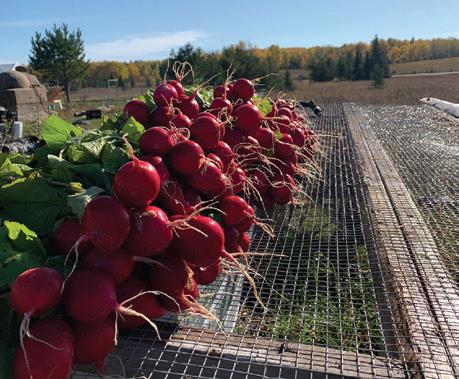
This may sound like it will make our lives harder, but my experience has been that when I ask not what can I get from the world and my relationships, but what can I give, my life becomes more joyful and beautiful. When we connect to the world around us and ask, “What is my purpose here?” we open up the potential to receive guidance from the wisdom of our relationships with the natural world.
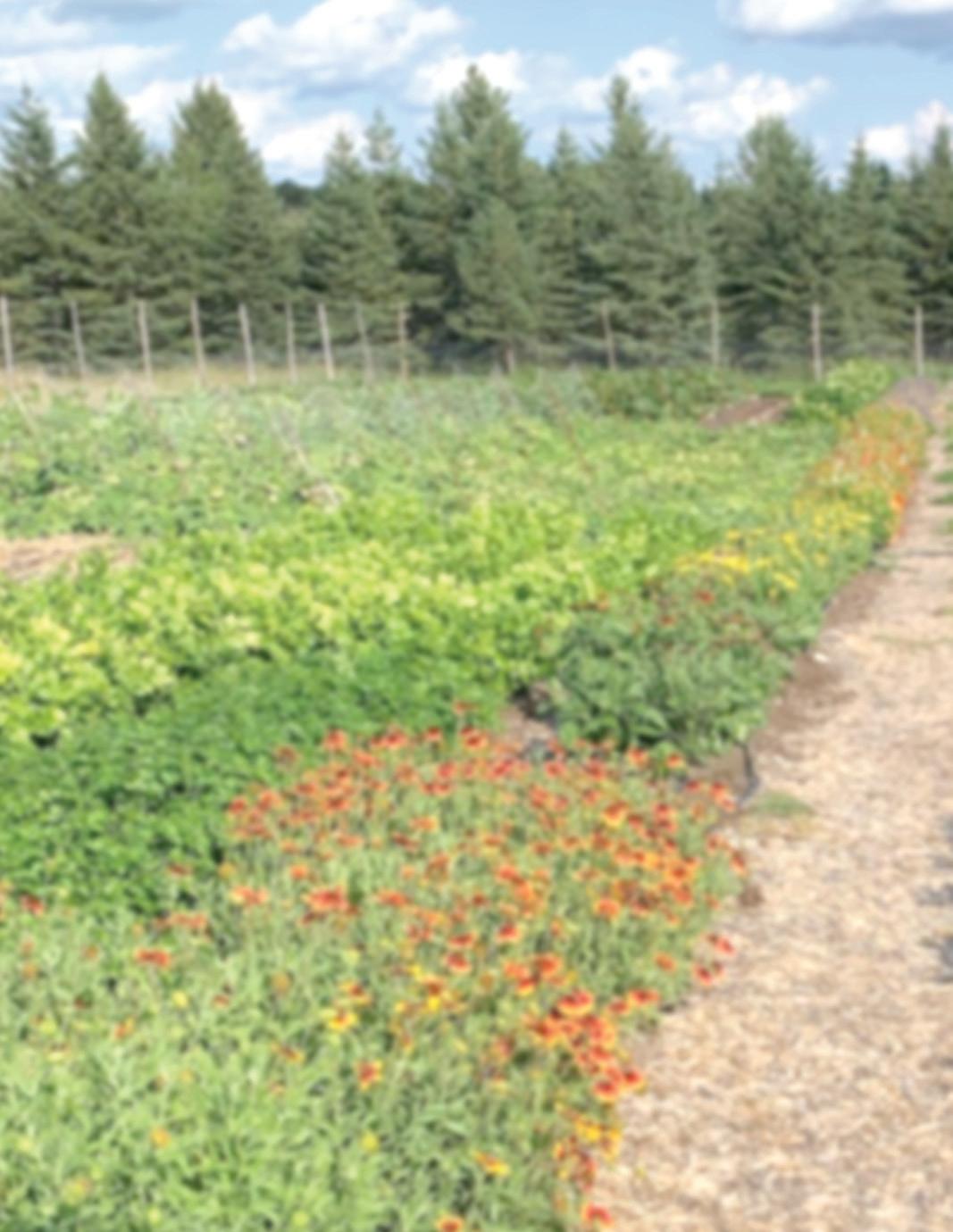
The way our culture lives is unsustainable, and without addressing the core reasons for that, we cannot lead sustainable lives. Our culture is defined by the way we understand our relationship to the rest of the world. If we can start with a perspective that we are in relationship with the world around us, and do our best to be in good relationship, then we can let the decisions we make flow from there.
It’s this kind of thinking that I bring into my work as a vegetable farmer. I have the privilege of working with dozens of different varieties of produce, and my goal is to grow them into vibrant and healthy food that will contribute to the health and vitality of my family and my customers. To do that, I need to keep the plants healthy. In order for the plants to be healthy, the soil needs to be healthy, which means that the microbes in the soil need to be fed. Spraying poisons would have the temporary benefit of eliminating pests in the moment but in the long term, this would have a negative impact on the health of the soil, and therefore the health of the plants and the people that eat them. So, I must instead find ways of managing pests in ways that maintain harmony in the living ecosystem. I find myself in a nexus of relationships that require me to act


with respect and consideration for the other beings so that we may all thrive.
Living life at the lake, we are in relationship with the fish, the birds, the plant life, and the other lake residents, now and all who will live there in the future. How we choose to live among and with these creatures affects long term sustainability of the ecosystems we are a part of. Keeping the lake clean, and shorelines healthy is a way of being in good relationship with the fish and water plants. Leaving native trees to stand keeps us in good relationship with the birds. Planting pollinator gardens helps us to be in good relationship with bees and other insects.
And of course, we can’t forget the importance of our relationships with each other. Our ability to support one another and work together is what enables us to do great things. In our fast-paced lives, we ought to invest energy into the people around us, listening to and sharing about the things that are important to us, helping each other to be the best version of ourselves.

Living in good relationship with one another gives us the practice we need to live in good relationship with our natural world. an
Born and raised in Kenora, Jacob Boutwell spent several years travelling and learning about agriculture, activism, and sustainability. He applied what he learned co-founding the non-profit Harvest Kenora and the vegetable farm Muriel Shores Farm.



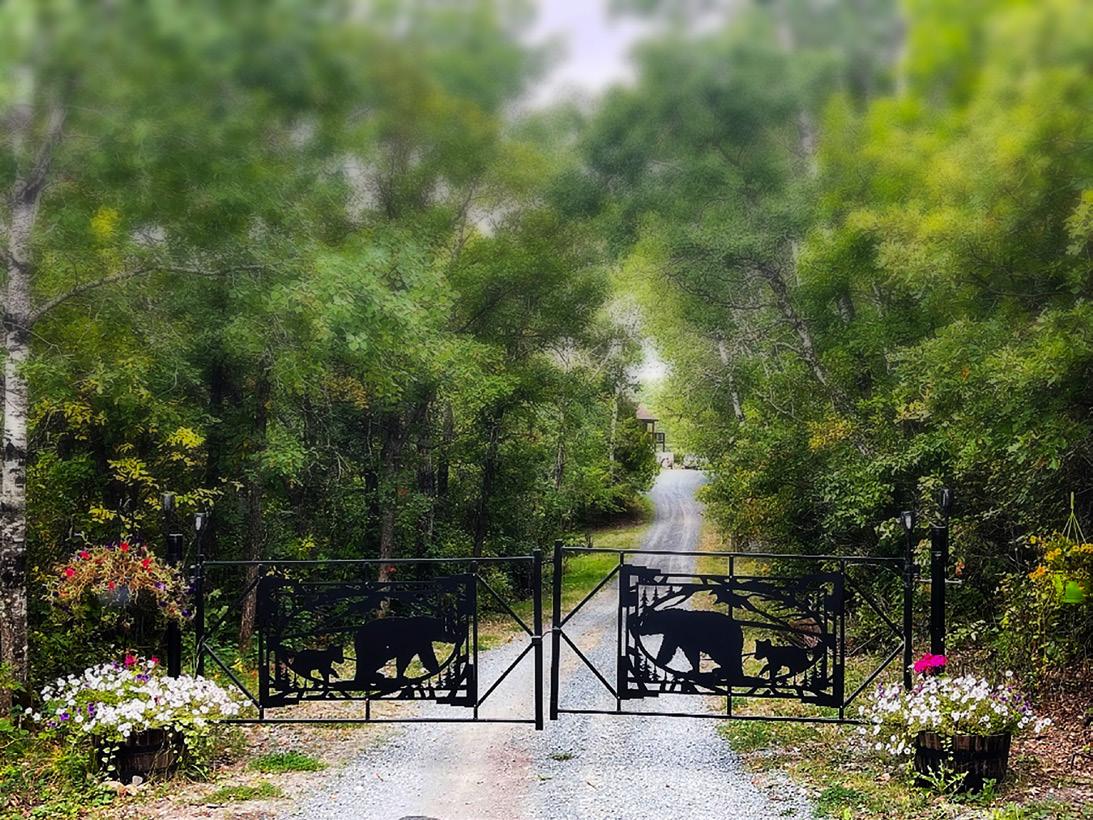
» There is not another property quite like this anywhere on Lake of the Woods.
» Perfect for a corporate retreat or family estate.
» Located on a peninsula, it is like an island EXCEPT you can drive to it!
» Six rental units—including the main lodge. All cabins are up to code and in near perfect condition. Cabins sleep a total of 37 people.
» Building sites for six more cabins. Water, sewer, & electric are already in— ready to start construction.
» Beautiful 2,200 sq. ft. boathouse with bar that seats 12. Slips for 3 boats up to 34 feet long. AND it’s on floats so it’s always the right level—never underwater like most others!
» Being sold totally “turnkey.” All furniture, boats, equipment, tools & supplies included.
» Asking price $3 million, but any reasonable offer will be considered.
» Owner will finance with $600,000 downpayment. Payments only $16,809/mo.
» Owner will pay $4,000/mo ($48,000/year) for a long-term lease back on one cabin. That will cover 25% of the monthly mortgage payment for the entire property.
BY DAVE SCHWARTZ
Everyone must believe in something. I believe I’ll go canoeing.
— Henry David Thoreau
The canoe has a long history in North America, especially Canada. For many centuries before the arrival of settlers to this country, the birchbark canoe was critical to the lives of inland Indigenous people for hunting, trade and travel. For West Coast Indigenous people, it was the dugout canoe that enhanced mobility. For the Inuit in the Far North, it was a close cousin, the kayak.
Modern recreational canoeing, as we know it today, began in Canada in 1850 when Ontario craftsmen started to build plank-style canoes out of cedar. Eventually, the joys of canoeing caught on with the general public, and by the end of the 19th century, the canoe was dubbed the “poor man’s yacht.”
Nowadays, countless thousands of people from all walks of life enjoy the multitude of benefits which recreational canoeing provides. Our area is a wonderful place for canoeing enthusiasts with its many thousands of lakes and rivers and streams waiting to be explored.
When you look at our area and study its geography, you might conclude that Mother Nature designed the canoe first and created
the ideal land for it.
There is no doubt that our everyday lives leave a pretty heavy carbon footprint. That could be eased a bit by choosing canoeing over more resource-intensive forms of recreation. The survival of the boreal forest in its present glory in our area depends on getting a handle on our carbon dioxide emissions. Hotter, drier climate will bring more wildfires and insect infestations, which, together with lower rainfall, could have the potential to destroy the boreal forest as we know it.



Obviously, the problem of climate change is much bigger than we can solve by adopting non-motorized forms of recreation but it’s a joyful paddle stroke in the right direction.
Canoeing’s rewards go well beyond environmental benefits. There are a myriad of other reasons to go paddling. It’s fun and provides physical, emotional, and spiritual benefits. Being outside and close to nature lowers your stress levels and get you closer to nature, helps you sleep better and make you a happier person overall.
Paddling is terrific exercise. It improves your cardiovascular fitness, toning your muscles without aggravating your joints.
Canoeing also provides time for self-reflection and reconnection with nature. It can be a meditative experience which allows you to forget the hustle and bustle of daily life and relieve any stress you feel.
Kids enjoy canoeing’s delights. A canoeing and camping trip helps youngsters develop confidence and resiliency, improve their social skills, and learn important life skills. With proper planning you can get beyond the range of cell phone towers and spend some quality time without electronic distractions.
Our many smaller lakes, rivers and creeks are tailor-made for the canoe. By seeking out those waterways you can avoid the dangers of wind and waves on large stretches of open water. Sticking to smaller waterways also keeps you close to shore most of the time. The riparian zone, the interface between a waterway and the land, is where the biodiversity is highest and where you are most likely to have memorable experiences with wildlife. For that reason and safety considerations, even if you happen to be on a large body, the best experiences will be close to the shoreline.
Slipping through the water by canoe can be almost silent, dramatically increasing the chance of close viewing of wildlife. Many of the most beautiful campsites, waterfalls, quiet streams, rock paintings, are best accessed by canoe. Beautiful campsites abound and often you will have an entire lake to yourselves.
Humans long for experience in the natural world. An hour, day, week, or month of travel by canoe can reconnect you with nature and let you enjoy nature in its full glory. Experiences with nature are good for our bodies and minds and help us to appreciate and understand the importance of the environment, biodiversity, and why we must cherish and protect them.
If you want to add more excitement to all of the other pleasures and benefits of paddling, perhaps whitewater is for you. Whitewater adds a real element of excitement to canoeing. Whether it’s part of a longer canoe trip or just a few hours spent at a rapid or series of rapids, maneuvering your way safely through a challenging rapid is a thrilling and satisfying experience. Part of the fun of running whitewater is learning; learning a whole new set of paddling skills, learning to read rapids to determine if they are safe to run and learning to plan the best route.
Canoeing in fast-moving water requires an entirely different repertoire of paddling techniques. The paddling skills and knowledge of how to read rapids are best learned from an experienced whitewater paddler or instructor.
Some very threatening rapids can be perfectly safe to run and some relatively docile-looking moving water can be very dangerous. Knowing which is which can mean the difference between a lifethreatening experience and an exhilarating one. The need to know what you are doing cannot be over-emphasized.



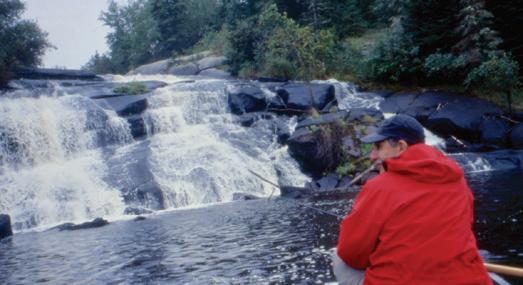
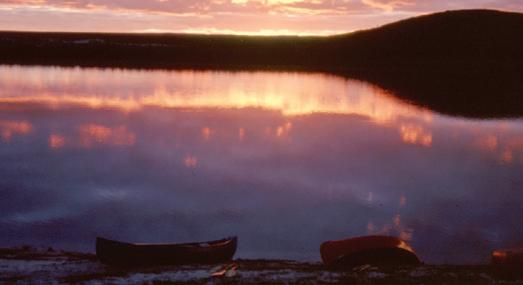
In this area most of the river systems are referred to as “pool and drop” in which sections of relatively flat water are separated by sharp drops which are frequently quite short. Many of those sharp drops are too steep and rocky to run safely but the ones that can be run provide a lot of fun and a welcome relief from portaging the canoe and gear. Although portages are necessary on most canoe trips, they are usually regarded as an experience to be avoided if possible. Sometimes, if a rapid cannot be run, the canoe and gear can be maneuvered through the rapid using ropes or “lined” through the tough spots. Lining presents its own hazards as it often involves tricky footing on slippery rocks, clambering along steep shoreline, and crawling over fallen trees.
Photography and fishing are hobbies which dovetail nicely with canoeing. A few casts below seldom-visited waterfall or rapid stand a good chance of providing a little excitement and some delicious fish for the next meal.
Canoeing and camping near the shoreline ensure an abundance of opportunity for memorable photographs which will bring back fond memories for many years. an
Top: Lining your canoe through an unrunnable rapid is sometime a welcome option.
Middle: Many of the prettiest sites in our area are best accessed by canoe.
Bottom: There’s nothing like a beautiful sunset to end a perfect day on the water.


YOUR HOME AT YOUR FINGERTIPS
CONTROL YOUR SECURITY, AUDIO, VIDEO, LIGHTING, BLINDS AND TEMPERATURE FROM ONE APP PROMPT LOCAL SERVICE AND SUPPORT WOLFE.CA



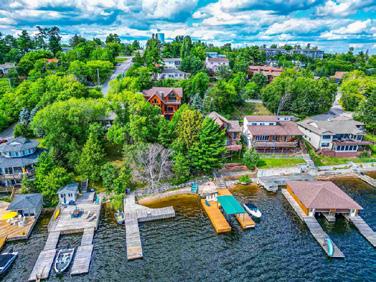
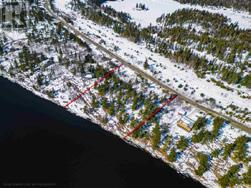



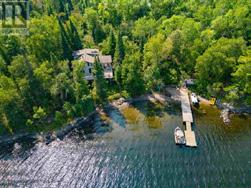

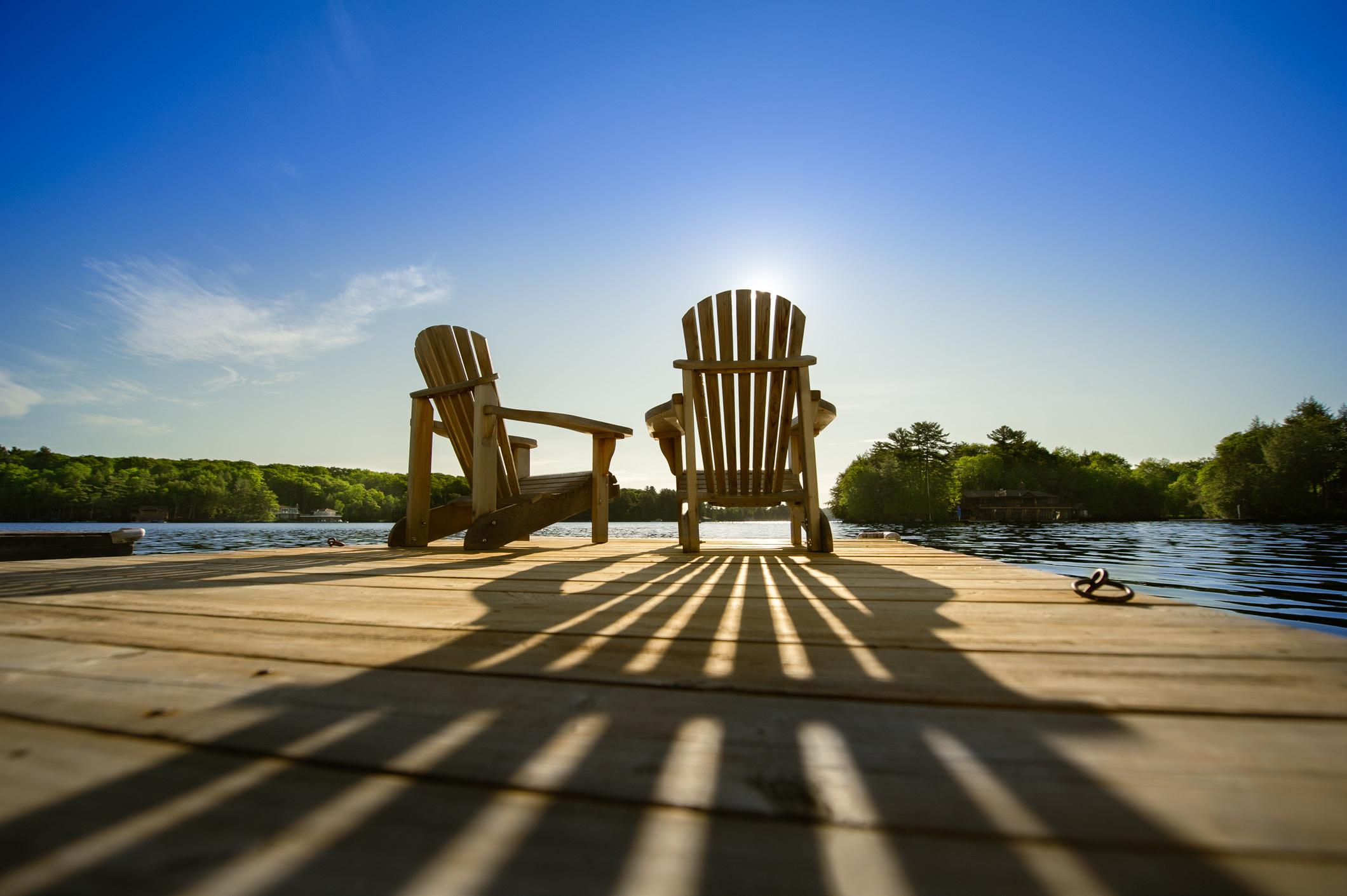





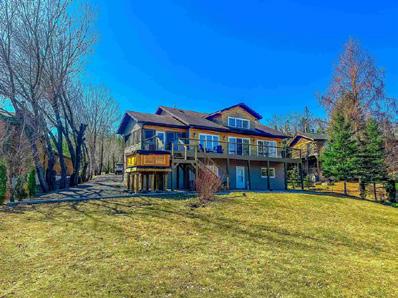

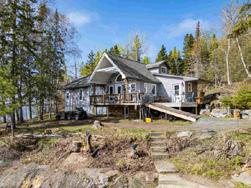

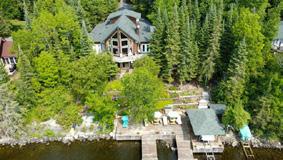









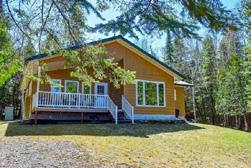









BY DON ENGEBRETSON
The invasive aquatic plant Butomus umbellatus (flowering rush) that has been discovered growing in the Lake of the Woods around Kenora and in the Winnipeg River around Minaki is expanding its infestation in both waterways. This non-native, Eurasian plant flourishes in water depths from a few centimetres to 3.5 metres. If left untreated, it clogs bays, beaches, shorelines, and shallow channels to the extent that swimming and boating are impossible.
In several northern Minnesota lakes, growth of flowering rush became so severe after 20 years that docks became inaccessible, property values plummeted, cottages were shuttered, and marinas closed. The plant also has dire effect on fish spawning areas and overall water quality, with equally devastating impact on wildlife that depends on lakes, rivers, and streams for their subsistence.
Can anything be done to combat flowering rush in northwestern Ontario? Yes. A variety of devices and methods have been developed to remove flowering rush from waterways and help halt its spread. They are:
• Lowering water levels (“drawdowns”) to allow for removal by hand and mechanical digging.
• SCUBA divers implementing Diver Assisted Suction Harvesting (DASH).
• Boat-mounted mowing and cutting devices.
• Chemical control, using the herbicide diquat.
What steps has the province of Ontario taken to monitor, eradicate, and otherwise control the spread of flowering rush in Ontario? The government’s actions have been limited to adding the plant to the Ontario Invasive Species Act in 2022, printing posters, and including photos and information about the plant in relevant government agency websites. There has been no provincial effort to actually monitor, remove, or control the spread of flowering rush by any of the means listed above.
Meanwhile, several Canadian provinces and states south of the border have been proactive in dealing with this severe environmental crisis:
Flowering rush was first reported in several lakes and rivers in 2012. In 2016, the provincial government began funding a variety of practices to combat its spread, including mechanical digging, DASH, and chemical control.
Flowering rush was first reported in eight lakes and rivers in 2012. In 2014, the provincial government began funding mechanical cutting; diquat chemical treatments began in 2016. Additional waterways are treated as they are discovered.

A small patch of flowering rush was first reported in the Pend Oreille River in 2010. It was eradicated via chemical treatment. State government agencies surveyed the entire state and discovered the plant in five additional rivers. Mechanical cutting and chemical control measures have been implemented since 2014.
Flowering rush was first identified in a single lake in 1964. A 1997 shoreline survey found dense infestations in the lake. The plant was also found in several additional rivers and lakes. State government agencies implemented water drawdowns, mechanical digging, and chemical treatments in 2014.
The Minnesota Department of Natural Resources began an eradication program in 2013 for lakes and rivers infested by flowering rush. Using diquat chemical treatments, acreage of the plant infestation was reduced by 92 per cent. Cottages and businesses were reopened, and fish populations rose back to normal levels. Annual testing shows overall water quality has returned to pre-infestation levels. Flowering rush is now treated as needed.
Since most of us don’t have the ability to lower water levels, scuba dive using the DASH method, or perhaps even mount moving and cutting devices on our boats, here’s some tips on manual removal of flowering rush. Also please note that any chemical spraying of flowering rush may be done only by a herbicide contractor licensed by the Ministry of Natural Resources and Forestry and with a permit from the Ministry for that specific application and location.
• Manually cutting the leaves below the surface is effective for keeping areas around docks navigable, as well as improving the appearance of the shoreline.
• Tools for cutting lake weeds, (Weed Razor is one) have proved effective. The blades must be kept sharp, and one must be careful to cut, not pull up, the plant.
• Cutting the plant as close to the bottom as possible with sharp sheers or a sharp knife is also effective.
• Removing all cuttings from the water is vital. They float and currents and wind can take them to new shorelines and bays, thus spreading the infestation. Ensuring that every bit of the plant that comes up (especially broken rhizomes) is safely brought to shore and deposited above high water levels is the only way to prevent contributing to its spread.
• Removal by cutting two to three times per season will knock the plant back, but not eradicate it.
• Plants must be cut every two weeks for multiple seasons before cutting kills the plant rhizomes.
Shared with permission from minakiconservancy.ca/ environment-heritage
I first reported the presence of flowering rush in the Winnipeg River sixteen years ago (2008). This was prior to the advent of the Ontario Invasive Species Act (2015). Searching the internet, the best I could do was report my sighting to the University of Guelph Invasive Alien Species Institute. I received an email reply thanking me, and noting that this was the first reported sighting of flowering rush in the Winnipeg River. It had previously been reported in waterways in southern and eastern Ontario. I repeat, this was in 2008.




Today, scour relevant Ontario government agency websites—Invasive Species Centre in Ontario, Ontario Ministry of Natural Resources and Forestry, Ontario Ministry of Environment, Conservation and Parks— and all you’ll find is information on how property owners and boaters can help stop the spread of a wide range of invasive plants.
Considering the fact that flowering rush poses a grave threat to Ontario waterways, and that eighty-seven percent of Ontario is Crown Land, I see a problem. Flowering rush is presently growing unabated in Crown Land waterways in the province.
Property owners in the region need to be on the lookout for the plant. You will find photos and information on flowering rush on the Minaki Conservancy website: minakiconservancy.ca. Click on “Environment & Heritage” on the home page. There, you can learn how to identify the plant. You can also click on a video that shows property owners how to properly remove and control flowering rush along docks, beaches and shorelines. See tips for manually pulling up the plants and rhyzomes without contributing to further spread in the sidebar.
Please, look far and wide. Flowering rush is present in Darlington and Clearwater Bay. The plant spreads to new areas via floating bulblets and rhizomes detached from the river bottom by beavers, otters, boating, and fishing activity. Current carries them downstream, meaning that the plant certainly exists upstream from these furthermost northern areas of Lake of the Woods.
Next, report your discovery of flowering rush via the EDDSMapS invasive plant reporting website at eddmaps.org. How to do this is explained in detail at the bottom of the flowering rush section on the Minaki Conservancy website. Please also contact me directly at dengebretson@gmail.com. I want to stay abreast of new Lake of The Woods sightings. I’m also happy to help with identification if you are unsure, and to answer any questions you may have.
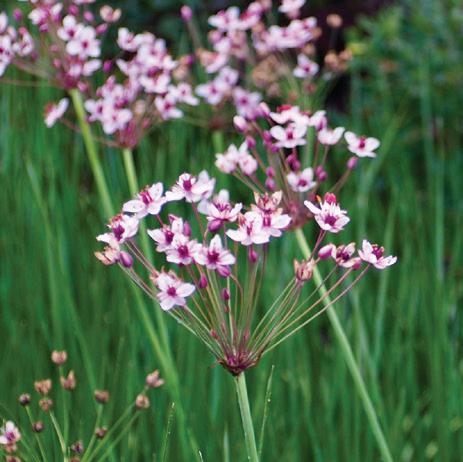
Finally, property owners should contact their local elected officials and voice their concern about the lack of flowering rush control efforts by the province. Start local—don’t fire off emails to Ottawa. Funding from the provincial and federal government will be necessary, but awareness of the threat must come from, and move up, the government chain, beginning with your local elected officials. an




Please visit mayberryfineart.com for additional information and to order your book online! M a y b e r r y F i n e A r t i s p r o u d t o p r e s e n t a n e x t r a o r d i n a r y c
Art book now available to order $95.00 (tax and shipping where applicable). The book can be purchased in person at both locations in Winnipeg.
Paintings and Archival Pigment prints available at the Mayberry Fine Art Downtown and Tuxedo locations.

BY ALEXANDRA LAVICTOIRE, LAKE OF THE WOODS CONTROL BOARD SECRETARIAT AND TEIKA NEWTON, LAKE OF THE WOODS WATER SUSTAINABILITY FOUNDATION
Water management treaties and boards have existed for many decades in Northwestern Ontario and their approaches to balancing interests in the watershed are continuously evolving. Two such boards, the International Rainy-Lake of the Woods Watershed Board (IRLWWB) and the Lake of the Woods Control Board (LWCB) have in the past two years taken steps to improve their engagement with First Nations and their understanding of Indigenous knowledge and values related to Nibi (which means water in Anishinaabemowin).
The IRLWWB manages the water levels and flows through the international boundary waters of Namakan Lake, Rainy Lake and Rainy River. Water levels in the lakes are managed by a set of rule curves and decisions made by the board’s Water Levels Committee. The rule curves consider a wide range of social, economic, and ecological factors in determining optimal water levels. In 2020, following the most recent rule curve review (2015-2018), the Adaptive Management Committee (AMC) was created for the IRLWWB. One objective of the AMC is to assess how the Rainy Lake – Namakan Reservoir system may be
Summer invites us to relax and explore. But are you really ready for anything? Enjoy your season fully with the peace of mind that comes from comprehensive, affordable insurance coverage.
At The Standard Insurance, you'll get the best advice from local experts in auto, property, watercraft, business insurance and more.
Get comprehensive coverage customized for you - our licensed brokers will develop an affordable plan that protects you when it counts.
Scan the QR Code to request a FREE quote.
changing over time and whether any modifications to the rule curves may be warranted. In the past two years, the AMC has been working to better weave Indigenous knowledge and values into this adaptive management approach. By working with Indigenous groups and people throughout the watershed, the AMC is gaining an enhanced understanding and appreciation for the interconnections among the people, lands, waters, and living things in Rainy – Lake of the Woods. Indigenous expertise and participation help to improve watershed governance, water management, and sustainability practices.
In 2023, the AMC worked with Grand Council Treaty #3’s Territorial Planning Unit to host ongoing engagements with members of the Anishinaabe Nation in Treaty #3, especially those in communities nearest the international boundary waters. The current engagement project will wrap up in late spring 2024, but already this work has laid the foundation for ongoing relationship building and collaboration. Indigenous knowledge of habitats, fisheries, medicinal plants and more is already reshaping how the IRLWWB models the outcomes of its water


levels management, while principles and practices of Indigenous governance are becoming more deeply woven into the Board’s structures. Earlier this year, directly as a result of the AMC collaboration with the Anishinaabe Nation, Treaty #3 Women’s Council was welcomed to participate in the Board’s Community Advisory Group. Continued collaboration will help to address water quality concerns and respond to emergent threats from aquatic invasive species to the impacts of climate change across the entire Lake of the Woods watershed, too.
In addition to these Anishinaabe engagement activities, the AMC is currently developing parallel engagement opportunities with the Northwestern Ontario Métis Community, the Red Lake Band of Chippewa Indians and the Bois Forte Band of Chippewa in northern Minnesota. Each of these unique Indigenous groups holds specific knowledge about the Rainy – Lake of the Woods watershed and has adapted distinct cultural practices and governance solutions to support long term sustainability and resilience, while also providing invaluable contributions to watershed science and monitoring programs.
The Lake of the Woods Control Board manages water levels on Lake of the Woods and Lac Seul, as well as flows in the English and Winnipeg Rivers. The board is supported by a Secretariat, who is responsible in part for monitoring conditions throughout the watershed, implementing regulation strategies and communicating with the public. Unlike the IRLWWB, Lake of the Woods and Lac Seul are not managed via rule curves, but rather through a set of seasonal guidelines that change depending on hydrological and meteorological conditions. When adopting
a new regulation strategy, the board incorporates preferences and hears directly from stakeholders in the watershed, which include First Nations, cottager and tourism associations, resource agencies, power companies and others.
Contact Ray Summers rdsummers@blackrocksec.com (204) 295-6787





BY SUMEEP BATH, EDITORIAL AND COMMUNICATIONS MANAGER, IISD EXPERIMENTAL LAKES AREA
Smaller fish. Darker lakes. Warmer air.
IISD Experimental Lakes Area, just east of Kenora, is a freshwater research facility that has been monitoring and discovering the impacts of climate change on fresh water for over fifty years.
The science is complex, but the results are clear. And has implications for Lake of the Woods, the rest of Canada, and the rest of the world.
Allow us to distill what we have found over fifty years into two pages.
This is happening even quicker in northern temperate climates (such as in the boreal forest, where IISD-ELA is located). Autumn and winter months are warming much faster than summer months. Over the next century, Western Canada will likely become drier and Eastern Canada will become wetter due to increased precipitation.

In many parts of the Northern Hemisphere, researchers have documented shorter winters and shorter periods of ice cover. This will continue to happen. Based on regional climate projections for northwestern Ontario, the duration of ice cover is projected to decline by an additional 20–30 days by 2070.
Why does this matter? The duration of ice cover on lakes is important for winter roads into remote northern communities and recreational activities such as pond hockey and ice fishing. It is also very important to many physical, chemical, and biological processes in lakes.
Air is getting warmer, and this is happening even quicker in northern temperate climates, such as the boreal forest.

Across Europe and many parts of North America, many lakes are getting darker. In Eastern Canada, climate projections suggest that lakes will get darker, whereas in Western Canada, they will be getting lighter. This is due to different rates of precipitation.
Why does this matter? Water clarity is an important feature of lakes, determining how much light and heat penetrate the water surface and what sorts of animal and plant life can live and thrive there.
Lake trout are being squeezed. This happens because their preferred habitats get squeezed between surface waters that are too hot and bottom waters where dissolved oxygen is too low for the trout to survive. And this will continue to happen. With increasing global temperatures, we can expect surface lake temperatures to rise, which may start affecting the habitat available to lake trout. If this happens too quickly and the species cannot adapt in time, lake trout near the southern edge of their natural range will likely begin to disappear.
Lake trout are getting smaller. The average length of an adult lake trout has decreased since records began way back in the 1970s. The decline in the size of lake trout over time is likely related to longer summer periods where fish are stuck in deeper waters with reduced access to food.
Scientists at IISD Experimental Lakes Area have discovered that not only are fish getting smaller, but they are also having to squeeze into
All of these trends can seem a little disheartening. But there is a light at the end of the tunnel.
First up, we need more and better restoration and management of existing wetlands to ensure that less water—and the nutrients, such as phosphorus (which is the key ingredient in creating algal blooms), it stores—leaches into lakes from surrounding areas.
We also need to track the health of more freshwater bodies over extended periods of time. Here at IISD Experimental Lakes Area, we have been tracking the health of our lakes since 1968, and our long-term dataset is incredible and unparallelled, but we need more data on the ongoing health of lakes across Canada and the world to build a broader picture of what climate change is doing to our freshwater supplies. We should also be supporting technological solutions that allow us to track the health of freshwater bodies—and analyze this data—all in real time.

We would also love to see more support the freshwater scientists and hydrologists of the future. A new generation of limnologists will need to take the mantle of tracking the ongoing impacts of climate change on the environment, and they need to be nurtured, supported, and offered opportunities.
To learn more about IISD Experimental Lakes Area, and the incredible freshwater science that is going down in Lake of the Woods, visit iisd.org/ela. an



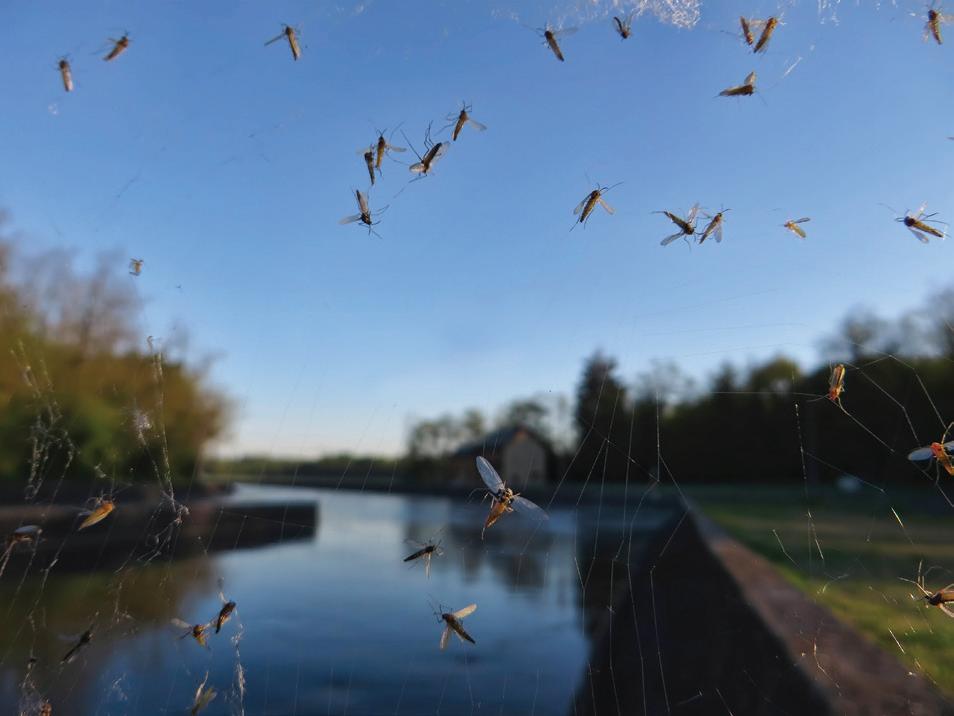








BY CHRIS HERC, ENVIRONMENTAL MANAGER, GRAND COUNCIL TREATY #3
Grand Council Treaty #3 (GCT #3) Territorial Planning Unit (TPU) is gearing up in anticipation of a busy field season. The TPU coordinates various community-based environmental monitoring (CBM) programs across the Treaty #3 territory, following the guidance and traditional protocols of Treaty #3 communities. A team of monitoring staff travel seasonally across the territory, collecting data to support water quality assessments, climate impact monitoring, invasive species monitoring, at risk species monitoring, and other programs that are critical to maintaining community-driven stewardship.
This year is an especially busy one, given the TPU’s recent findings of invasive species in Treaty #3. As shared in a recent GCT #3 news release (gct3.ca/category/media-release/ environmental), during 2023, the TPU collected samples from 38 waterbodies within Treaty #3 territory, focused on detecting the presence of zebra mussel veligers (the zebra mussel larval stage). While most samples were negative, three positive results were identified, including one in Christie Creek, a tributary flowing into Upper Rainy Lake. These findings raise concerns about the potential for zebra mussels to spread into Treaty #3 waterways and highlight not only the importance of continued monitoring, but the need to establish preventative measures. Installing boat decontamination stations in high-use areas across Treaty #3 territory and generating accessible resources for greater education on invasive species are just two measures the TPU has orchestrated in combating the spread of invasive species.
The TPU is also tackling other invasive species monitoring, including the spiny waterflea, purple loosestrife, and invasive phragmites. To tackle purple loosestrife and phragmites, intensive mapping is completed throughout the field season to identify areas where stands have been sited. DNA testing is also conducted in instances where certainty can’t be concluded on whether the species of phragmites identified is invasive or native. Just as efforts are being carried out to prevent invasive zebra mussels from spreading, efforts are being developed to handle these other invasive species. In 2024, the TPU will be working on a Biocontrol Project, which will see the release of Neogalerucella spp. beetles into areas where purple loosestrife has taken hold. A natural predator of these plants, they will consume the invasive species without posing any further threat to the environment.
CBM provides critical opportunity for Treaty #3 communities to take a lead role in protecting their lands and waters for generations to come. Since 2018, the TPU has been working with Treaty #3 communities during the spring, summer,
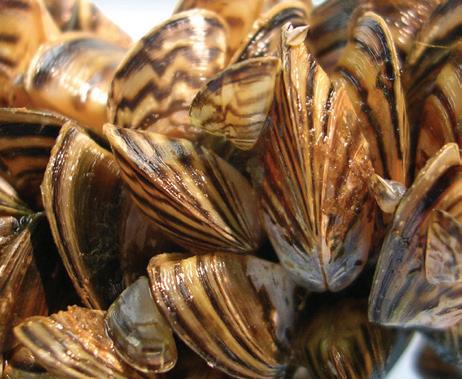
and fall months to monitor water quality at community identified locations across the territory. The program provides an opportunity for community members to participate in hands-on activities and learn about the processes and equipment that are required to carry out effective monitoring.
The newest of the CBM programs is Community-Based Climate Impacts Monitoring, which is in its first year of operation. The TPU is in the process of acquiring research-grade weather stations that will be used to gather long-term climate data to support a better understanding of changing climate conditions in the territory. In addition to the weather stations, the TPU will be monitoring precipitation levels year-round and installing long-term water monitoring stations to collect baseline data throughout the open water monitoring season.
CBM programs facilitated by the TPU can help empower community members and provide opportunity to assert inherent jurisdiction as caretakers of their environment. They foster a sense of environmental responsibility and help ensure the health and well-being of the Treaty #3 territory in the future. The TPU is always happy to share more about the work being carried out, and encourages Treaty #3 communities to use the existing programs as models for their own independent CBM work.
If you have any questions, or would like to reach out to the TPU for more information, please contact Chris Herc, Environmental Manager, chris.herc@treaty3.ca. an





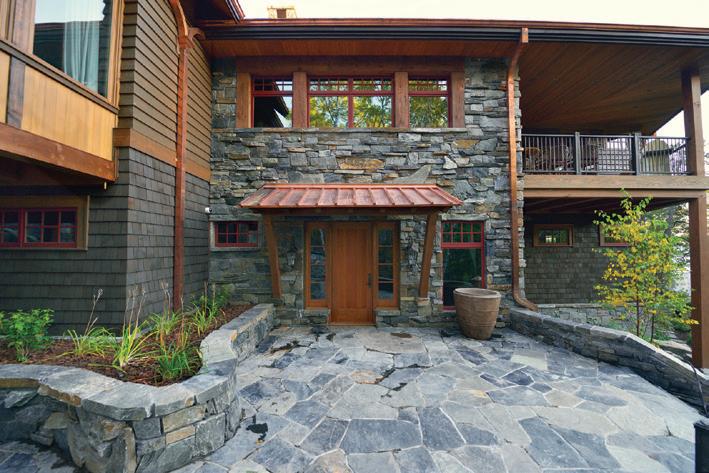

It is hard to ignore the signs of climate change and environmental pollution that are all around us. Many of us have not considered how making choices regarding our pets can also help us tread a little more wisely.
BY SHARON GURNEY
It is estimated that there are 8.2 million dogs in Canada. That’s a lot of doggie-doodoo! Just as human sewage contains pathogens and high levels of nutrients that can fuel the growth of algae, the same is true for pet waste if it inadvertently makes its way into lakes and rivers with runoff. Bacteria and parasites in dog waste can carry pathogens that are harmful to humans and other pets. This includes Giardiasis, Parvovirus, Cryptosporidiosis, Salmonellosis, Campylobacteriosis, ringworm and tapeworm. Even if the pet waste doesn’t wash away into waterways, it is not harmless. The parasites and bacteria can stay in the soil for years, putting children and other pets at risk.
Although pet owners may think bagging poop in urban centres and disposing in the trash is the best environmental practice, surprisingly it is not. When pet waste is landfilled under these anaerobic (low oxygen) conditions, the waste releases methane gas – a potent greenhouse gas. Many municipalities have implemented pet waste collection programs, so the waste can be treated and recycled. Others allow pet waste in their green bin
collection program. Check to see if your community offers a pet waste collection program, and if they don’t, encourage them to start one.
If out hiking in one of Ontario’s beautiful parks, Ontario Parks suggests if an outdoor privy is not available, deposit and bury pet waste in a 15 to 20 centimetres deep hole, that is at least 30 metres from a waterway. It’s a great idea to keep a small spade with you when you’re out for a walk in the wild so you can bury you pet waste if you can’t easily transport if with you. Read more at ontarioparks.ca/parksblog/ecological-impact-dog-poop,
According to the U.S. Environmental Protection Agency, the most sustainable way to dispose of dog poop is to flush it down the toilet (minus the bag). Larger municipal wastewater treatment plants are equipped to process dog waste. The same cannot be said for cat waste as it may contain Toxoplasma gondii, a parasite that can infect people and animals. Municipal wastewater systems are not always able to kill this cat parasite. Unfortunately, septic systems in lake country are not a good alternative for disposing of pet waste due to the composition of the pet waste, which can impair the functioning of septic fields.

Dr. Gregory Okin (UCLA) calculated that meateating by dogs and cats in the U.S. creates the equivalent of about 64 million tons of carbon dioxide a year, which has about the same climate impact 13.6 million cars driving for one year.

Consider making a doggy waste composter away from the lakeshore, where the waste can be mixed with a carbon source (e.g. leaf litter, peat moss, wood chips, etc.) and allowed to compost. The fully composted pet feces is safe to dispose in a forested area allowing the surrounding vegetation to utilize the nutrients in the compost, or the compost can be used on non-consumptive garden areas. Another option is to leave the compost in place and move your composter to a new hole. There are lots of DIY instructions online on how to make your own pet waste composter (e.g. youtube.com/watch?v=0CnXFB6cWX0 ).
Waste will decompose and feed the surrounding vegetation. Be sure to only use no bags or compostable bags in the composter. Compostable bags are always the best choice when you have to dispose of pet waste in trash receptacles, reducing the impact of plastic waste.
Sadly, most cat waste is destined for landfill as research shows that you need quite high temperatures in the compost, i.e. 164°F, to kill the toxoplasma. Otherwise there is the risk it will travel through the compost soil. Again use compostable bags.
Other great ways to reduce your pet’s environmental footprint include:
• Food: Switch to less resource-intensive pet foods and treats. Look for certification labels for sustainability. Wet food contributes about seven times more carbon emissions than a dry diet.

• Pet toys, bedding and crates: Choose products made of sustainable materials such as hemp, recycled rubber and bamboo, minimizing plastics and products that can’t be recycled or repurposed when they are no longer being used by your pet. Many pet toys are made from plastic or contain components that are difficult or impossible to recycle. These end up in landfills.
• Pet population control: Each year, millions of unwanted pets end up in shelters or are euthanized. Help control the pet population by supporting spay and neuter programs. an
BY HEATHER GROPP, KENORA
For 30 years, I was a visitor to the Lake of the Woods Region. We had family who lived here, and my parents had a family cottage in the region, so I spent my summers loving all that the area has to offer. It has only been in the last decade or so that I have been fortunate enough to call this area my home.
As a child, one of my all-time favourite activities was picking blueberries, and this remains true to today. I find it so peaceful and relaxing and take great joy in coming out of the bush with buckets full of berries. Therefore, it is not surprising that perhaps one of my strongest food memories of my time visiting Lake of the Woods as a child involves blueberries. I was fortunate to often get an invite to spend time with my aunt, uncle and cousins. My aunt would often serve this delightful blueberry cheesecake. It quickly became my favourite, and when visiting I was always so happy to see it on the table after a great meal. To this day, this recipe evokes so many happy memories of great times with family at camp. My aunt was kind enough to share her recipe with me, and it is a delight we continue to enjoy at our home today.
Pre-heat oven to 375 degrees.
Crust:
1¾ cup graham wafers
½ cup melted butter
¼ cup sugar
Combine and press into a 9x13 pan. Bake for 8 minutes.


Filling:
1x 8 oz package of cream cheese
2 tbsp milk
1 tbsp lemon juice
1 cup sugar
1 pkg Dream Whip
Beat cheese, milk and lemon juice until smooth. Add sugar. Beat well and set aside. Prepare package of Dream Whip. Fold into cream cheese mixture and
Topping:
4 cups blueberries
¾ cup sugar
3 tbsp cornstarch
1 cup water
2 tbsp lemon juice
In a saucepan, crush 1 cup of the berries, add sugar, cornstarch, lemon juice and water. Boil until thick. Add remaining berries and spread over cheesecake. Chill for 2-3 hours and serve cold.

It was a glorious autumn day. With my son on my back and my daughter on my shoulders, I hiked up to one of the most beautiful spots I know. There on the crest of a granite outcropping, I could see sunlight dancing on the surface of a distant lake, the green smooth hills stretched out before me and a hawk wheeling high in a cloud flecked sky. It was breathtaking and I marvelled at the beauty before me.
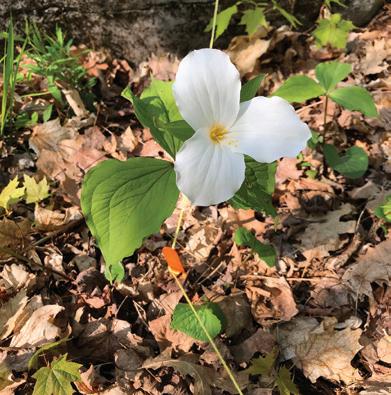
Einstein once said:
“Imagination is more important than knowledge. Imagination is the language of the soul. Pay attention to your imagination and you will discover all you need to be fulfilled.”
But when I looked over at my children, they were hunkered down. Intently watching a line of ants marching by. It turns out that children have a more contracted view of the world, and they tend to notice what is right there in front of them. They have an incredible eye for detail and often spot things that we adults miss. Here are a few simple activities that helps both you and your children celebrate the very small in the natural world.
With your imagination, you can gain a whole new appreciation for the natural world. So, using the power of your imagination, shrink yourself down to the size of an ant. What would the forest look like if you were only a fraction of an inch tall? What points of interest might capture your attention? Perhaps a funnycoloured mushroom, a chewed leaf, or an interesting groove on a fallen log? Try this:
• Get 10 to 20 Popsicle sticks and about 30 feet (10 meters) of colourful yarn. Using these simple materials, create a micro-trail. Find at least eight points of interest no more than a few steps from each other. You might find an interesting hole in the ground, a spider’s web, or an animal track.
• Beside each point of interest, press a Popsicle stick into the ground. Connect all the points with the yarn by wrapping it a couple of times around each stick and extending the string to your next Popsicle stick until all points are joined in one long line. This becomes your micro-trail. When you are finished, sit down and quietly watch the trail for a few minutes. Then, get down on your hands and knees and take a trip along the trail, keeping your head close to the ground. Better still, use a magnifying glass or a hand lens and really study things up close. Take someone special to your micro-trail and give them a guided tour of your discoveries.

Much of what goes on in the world is hidden from view. There is a magical underworld replete with tiny dragons, earth-boring submarines, and shape shifters. All you need to do is peek! To discover these special places, simply venture into a forest. Before you go, provide each person with a magnifying glass if possible and a small container (glass jar, yogurt container, or bug jar).
Ask your participants to carefully lift up a rock or a log and look underneath. These are the windows into the world below. You might be lucky enough to spot a salamander (looks a bit like a very small dragon) or a plump earthworm (these have the capability of plunging down deep just like a submarine). You might even see a pill bug, a tiny crustacean that rolls up into a tight ball when threatened (a shape-shifter). What magical creatures can you find? What are they and how do they help to maintain a healthy and diverse forest ecosystem?
• Can you spot the “wood wide web?” Look for tiny threads, minuscule filaments of a fungal organism that wrap themselves in and around tree roots. This “mycorrhizal network” helps to transfer water, nitrogen, carbon and other minerals between trees. In this way trees can “talk” to each other through these fungal networks.
• Earthworms help to aerate the soil and provide nutrients with their castings (worm poo). Thousands of fungi, bacteria, millipedes, and pill bugs decompose leaves, branches, and wood, helping to create rich and fertile soil. Many beetles and their larvae are an important food source for mammals, amphibians, and birds.
• If you can, have everyone carefully scoop their critter discoveries into a container. Have each participant sit in a circle facing inward. On a given signal, have everyone pass their container to the right at the same time. Ask one of the questions posed below then pass your critter again to the right. Continue this pattern. Here are some sample questions. Feel free to ask your own. How does your critter move?
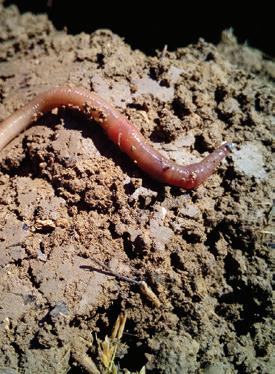
» Can you see it breathing?
» Insects have compound eyes (or many little eyes bunched into one eye). Can you see your critter’s eyes?

» Examine your critter’s mouth parts. What do you think it eats? Does it have chomping parts (like a grasshopper), sucking parts (like a mosquito), sponge parts (like a housefly) or biting parts (like a deerfly)?
» How many body segments does your critter have? A true insect has a head, a thorax (middle part), and an abdomen (stomach). A spider only has two body parts and therefore is not an insect (it is an arachnid).
» Is your critter camouflaged? Think about where you found it.
» How might your critter protect itself?
» What do you think your critter is? If you can, have an insect field guide handy as a resource.
Please place back your critters exactly where you found them. Don’t forget to gently close your window, being careful not to squish or harm your critters.
What small wonders can you discover? an
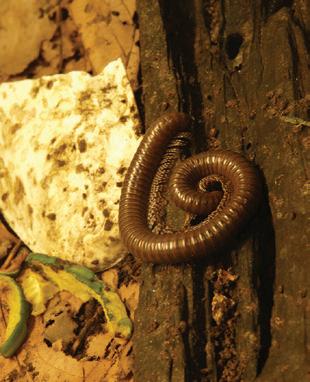

Sabaskong Bay, Lake of the Woods
2.05 acres of wooded land with 184 feet low profile rock shoreline. Road access.
$109,000
Greg Kirby, Re/Max First Choice Realty Ltd 807-466-8266 / gregkirby.ca
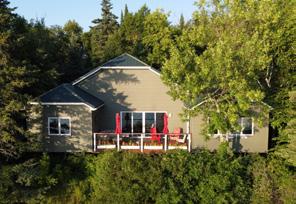
Gun Club Island, LOTW
This 1700 sq ft modern and cozy cottage is only 2-3 km from mainland south of Coney Island. It has approx. 145 ft of sunset facing shoreline; low profile; well treed providing good privacy; guest cottage.
$650,000
Carmichael Real Estate Inc. 807-466-2236 / lakeofthewoods.net

1319 Beach Road
Prime location on Lake of the Woods. Spacious home, cathedral ceilings, custom kitchen, 4 bdrms, 3 baths, fireplace, outdoor hot tub, and owner-offered living room renovation.
$1,299,000
Century 21 Northern Choice Realty Ltd.
Independently Owned & Operated – Brokerage 807-468-3747 / century21kenora.com

210 Second Street South
Historic building in the heart of Kenora! Updated and well-maintained. Main floor: 1250 sq.ft. coffee shop with 13ft ceilings. 2nd floor: 1229 sq.ft. 1-bdrm suite. Lower level: large storage area. Both units are leased until Dec 2025.
$469,000
RE/MAX NorthWest Realty Brokerage 807-468-4573 / remaxnorthwestrealty.com

515 Bay Street, Keewatin
3 bed/3 bath home w California Room, fenced garden oasis, many extras & high-end finishings, triple lot w room for oversized garage. Steps from Lake of the Woods!
$695,000
Shelley Torrie Home & Cottage Realty 807-547-4020 / kenora-realestate.com
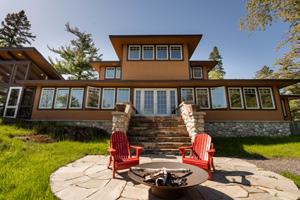
305P Treaty Island – File 4616
This water access listing is the perfect mix of history and charm! With 6 bedrooms, 4 bathrooms, and 3,000 sq. ft of living space, entertaining friends and family is a breeze. A must see!
$2,195,000
Cabin Country Realty 807-468-3541 / cabincountry.com

2-534 Park St—Little Caesars
Exciting Business Opportunity! Own a wellestablished, profitable business in a prime location with a long-term lease. High foot traffic and loyal clientele ensure immediate success. Serious qualified buyers, contact us today.
$649,900
RE/MAX NorthWest Realty Brokerage 807-468-4573 / remaxnorthwestrealty.com

29 Snow Drive
Waterfront bungalow with finished walkout basement, 190 ft Black Sturgeon frontage, 4 bedrooms, 3 baths, gourmet kitchen, sunroom, 2-stall garage, recent upgrades and sandy beach
$779,000
Century 21 Northern Choice Realty Ltd. Independently Owned & Operated – Brokerage 807-468-3747 / century21kenora.com
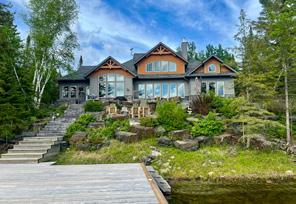
5 Bear Paw Trail – File 4618
This newer construction year-round cottage was built with comfort and low maintenance in mind and WOW does it have curb appeal! Offering a total living area of 2,788 sq ft with 4 beds and 4 baths.
$2,289,900
Cabin Country Realty 807-468-3541 / cabincountry.com
Email membership@lowdsa.com or mail LOWDSA, Box 1160, Kenora, ON P9N 3X7
Next submission deadline: August 9, 2024
Please try to keep your listing to 35 words or less.
Beautiful sunsets on Darlington Bay. Two bedroom cottage, 5 min boat ride from Perch Bay resort or the Winnipeg River public dock in Keewatin. Newer open-concept cottage with beautiful lake views, front deck, BBQ, fire pit and great dock for fishing and swimming. Great cellular service and nice shoreline. Composting toilet and outhouse. One bedroom has a double bed, the second has double bunk beds and single bed. Available Jul 29-Aug 23. $1300/ week (minimum 2 weeks preferred). Contact aaronaway2@gmail.com or text 204-230-3372 for more information.
Cabins For Rent on LOTW. Located on a peninsula 7 miles south of Sioux Narrows. Everything is new or nearly new condition. Rates from $199/day to $899/day. Text 218-310-2200 for photos & more info.
Large, private island in Poplar Bay. Two cottages, bunkhouse, boathouse, & boat slip. Main cottage—extensive decking, spectacular veranda, 3 bedrooms. Second cottage—2 bedrooms, great room, veranda. Contact 204-292-5618 for more information.
Two Private Cottages on Coney Island. Adjacent cottages connected with large 2-tier deck on private bay. Total of 1400+ sf, 4 BR’s, 2 full baths & 2 full kitchens, new fixed and floating dock w/ 300 ft of sand beach just minutes to Kenora marinas. New doors & windows, lightning fast Starlink WIFI, laundry, BBQ. Prefer seasonal rental, will consider 2-week minimum @ $3500/week. Email CTHaynor@gmail.com.
West end of Coney Island…southern exposure facing Cameron Island. Four bedroom camp. New fixed dock and floating dock for lots of boat parking and great swimming. Brand new Septic system. Bathroom has been upgraded and has an outdoor shower. It is an older style camp built in the 50s and 60s. Has a new roof and a new foundation. Interior is ‘retro rustic’. Front deck very close to the water’s edge. Low profile with only a dozen steps up from the dock. Beautiful back yard, great for volleyball and badminton. There is a wood-burning fireplace and a gas BBQ on a back deck. The CampComm satellite internet system is installed and can be reconnected. Minimum 2 week stay. $2,400 per week. Email inquiries re longer stays and rates to regal2750@gmail.com . Lakefront Cottage – Clearwater Bay. South exposure, private, road access, (4) bedroom cottage on 6 acres. Steam room / locker room on the lower level and media room. (4) bathrooms, including (2) ensuite for the primary bedrooms, steam shower in primary bedroom. Kitchen, dining and living room that opens onto a (3) season enclosed porch with opening windows. Laundry room. Multiple decks, including a barbecue deck. Boathouse with plenty of dock and swimming space and ample room for docking boat(s). Starlink wi-fi. 2 minutes off Highway 1 and 15 minutes to Kenora. Jun 28th – Jul 5th, Jul 5th – Jul 12th, Jul 12th – Jul 19th, Aug 21st – Sep 2nd and Sep available dates. $5000 a week, peak season. Contact: jhill@edgemontathletic.ca
Looking for a full season rental on LOTW?
Seasonal rental available for summer of 2024. We are offering a 2 bedroom 1.5 bathroom water access cottage in the Welcome Channel area. Fully furnished and equipped. Starlink internet and Shaw satellite TV. Protected bay and boathouse. Plenty of docking. 10 minutes from Kenora. Available May long weekend through to Sep 15th. Contact for more information, pics or in person viewing. Email: quietchannelcabin@ gmail.com or Text 807 407 3001
Road Access Clearwater Bay Cottage. Drive up to the door and you're just steps away from the lake. Recently updated 4-bedroom, two-bathroom cottage, including master ensuite. Lakefront cottage with southern exposure. Beautiful three season screened-in/heated veranda, east and west facing docks, with dock slip available. Wifi, full kitchen, woodstove, and BBQ. Minutes from liquor and convenience
stores. Available to rent May, Jun and Sep $2500 per week. For more information and or photos email burmaroadrental@gmail.com.
Quiet Cozy Get Away on Island Property. Cozy 2 bedroom cottage on Shragges Island, LOTW. This property is lake access only so guests will need their own transportation. Enjoy a private dock with boat parking for two boats and sauna, lots of trees for privacy, a big deck looking out on protected Quiet Bay. Bedroom 1 has a double/single bunkbed. Bedroom two is a loft with a Queen Bed. There is a screen room for eating outdoors bug free, an outdoor BBQ, indoor kitchen and bathroom. We rent Friday to Friday in the summer for $1750 a week. This rental is suitable for 2 couples or a family of 5 people maximum. We ask for no parties or pets. Please contact Karla at 8074644088 or email karlajoytreadway@gmail.com to secure your week this summer.Please contact Karla at 8074644088 to secure your week this summer. Island rental near Kenora. A modern two-bedroom with a sunroom that could be a third bedroom also has a pull-out sofa in the living room. It also comes with a one-room guest cottage. Comes with satellite TV, good cell service also BBQ on a large deck. It also includes 2 kayaks and a canoe. must have own boat or boat rental, and also comes with a parking spot in Kenora. Available for one week during the first three weeks of Jul or the last 3 weeks of Aug. Composting toilet knowledge would be helpful. $1350/ wk. Ph. 204 888-4839
Lakefront - Clearwater Bay. South exposure; road access; spacious docks for swimming, fishing & boating. Large great room, kitchen & dining areas with spectacular lake view. 3 bedrooms; master with ensuite. Full second bathroom—shower & bath. Den with fireplace, satellite TV & pullout sofa. Dishwasher, microwave, washer & dryer. Large deck & BBQ. Minutes from the liquor store, gas & groceries. 1-2 week stays, Jun-Sep $4000/w. Contact dougpeever1955@ gmail.com for booking details.
LOW Storm Bay Rd 9. Large house with 9 bdrms, hot tub, multi level decks, granite kitchen, boathouse, sauna, WiFi, fireplace, washer & dryer, dishwasher. Kayak & boat are a possibility. $2500-$7000 weekly. Discounts available in the fall. mail@markmcgregor.ch
Island rental Storm Bay Rd. near the rollers. 2 log homes, new mattresses, 1 king, 1 king, a double and a single. 2 kayaks & a boat can be included.
$200-$375 per night. kaitlyn.mcgregor@gmail.com
Brule Point lakefront 3 bedroom cabin, LOW. Fantastic fishing area, quiet bay, two docking facilities with plug, private beach, fully stocked including freezer, large deck. Cabin sleeps 5, single bathroom/shower. Boat access only. 2024 rate $1390/week. Contact donna@taketwoinc.com. Exceptional location on Coney Island. Minutes from Kenora / Keewatin with western exposure. Newer, open concept cottage with 4 large bdrms and three bathrooms. Separate master suite with bathroom and private deck. Amenities include a full kitchen with all appliances, dishwasher, microwave, washer/dryer, large island, separate dining area, wood burning fireplace and satellite TV. Screened porch with large wrap around decks overlook the lake, outdoor shower and built-in gas barbecue. Waters edge has a large main dock with two floaters that provide deep water docking and great swimming. Minimum 2 week stay. Email inquiries to bill.ralph@shaw.ca
Lakefront on Trout Lake. 20km north of Kenora. 2 or 3 bdrm cabin available for rent weekends or weekly May-Jun. Full kitchen & bathrm, TV/ DVD, BBQ. Comes with canoe, kayaks & 12 ft. alum. boat. Deck off front of cabin; private deck at water’s edge; your own sand beach. Spring fed lake with crystal clear water. troutlake596@gmail.com Lakefront Cottage on LOTW. Storm Bay Rd, road access. Includes 3 bedrooms, full kitchen, bath and laundry. 2 acres, private bay, sandy beach, floating dock and good fishing! Available Jun, Jul, Aug. $2,500/week. Text 204-951-5812.
Classified ads are a free service for LOWDSA members.
Note that they are posted within a couple days of submission and not subject to magazine deadlines.
Lakefront Cottage, near Welcome Channel. South exposure, water access. 5 miles from Kenora by boat. Private dock, hydro, Starlink internet, TV & DVD player, full kitchen w/ dishwasher & 3 pc. bathroom, additional outdoor shower, washer & dryer, bbq, screened porch, 2 bedrooms. Available Jun – Sep. Monthly, Seasonal rental contact lowcottage@hotmail.com.
Rustic 1000 square foot cabin on Zigzag Island (Clearwater Bay). 5-minute boat ride from Rockeries Marina. A boat rental could be available. Amazing fishing nearby. Satellite TV, great cellular coverage, bbq, kayaks, fire pit, and much more. Prefer a couple or former cottage owners. Knowledge of a composting toilet is essential. 1300$ per week. 204-688-7347.
Lakefront Cottage for Rent - Locke Bay. Road access 15 minutes North West of Kenora. Built in 2017 with 2 bedrooms and 1 bathroom. South exposure with private dock. Fully furnished. Includes Satellite TV, Internet, A/C, BBQ and fire pit. Would prefer a seasonal rental May - Sep $22,000 or $2000 week (2 week min). Email kenoracottage@hotmail.com for more info.
Lot 20 Shoal Lake, road access. 2900sq. ft. lakehouse, 5 bedroom, 2.5 bath, pine ceilings elm flooring, granite waterfall counters, 2 screen rooms, 2 fireplaces (wood burning), well softener and water purification system. 75 ft. composite deck, cedar gazebo @water,dbl. boathouse. Many more features. 204-668-7185 or 807-700-1581.
Camp/Estate For Sale on LOTW. Located on a peninsula 7 miles south of Sioux Narrows. It is like an island, except you can drive to it. Everything is new or nearly new condition. Could be a camp but would be PERFECT as a Family Estate or Corporate Retreat. Asking price $3 million or best offer. Owner will finance. Text 218-310-2200 for photos & more info.
Rush Bay road access, three bedroom two bath cottage. On one acre, one mile from landing. Bunkhouse, double boathouse with rooftop patio, tool shed, floating docks, front, back decks. Info at rushbay2@gmail.com.
Golf Course Bay, LOTW. For sale by original owner, 3200 sq. ft. 2 story A/C home, 2.5 stall garage with heated workshop, on 2 lots with sand beach, dock, covered boat lift, municipal water & sewer, natural gas heat, paved driveway, many other features. Phone (807) 468-8770.
Part-Time, General Labourer. For help around the cottage and land, possibly 3 days a week. Location: Northern Harbour area at the end of Storm Bay Road. Contact E-mail: peterzaj@mymts.net.
Young Chang 6ft.10in. G208 semi concert grand piano in excellent condition. Enhance the sound and visual aesthetics of your home or cottage with this beautiful instrument Asking price: $14,000. Call 807 407 5891.
PORT A DOCK Aluminum Boat Lift. $4,000. 58”
vertical lift, 4000 lb. capacity, electric or manual. Located in Echo Bay, LOTW, Rush Bay Rd. Contact echobay@bell.net or call 807-733-2187.
“Find Your Voice.” One-on-one painting lessons designed to your interests. I have over forty years experience teaching all ages. Supplies are included. I teach traditional techniques and how to blend them. Contact, pippij69@gmail.com.
Duo-Therm oil heater. 17"W x 21"D x 34"T.
Asking $150. Ted 204-294-4891
8ft of 6" SS chimney. Complete with interior box, roof pieces & hat, asking $550. Ted 204294-4891
13'8" fiberglass kayak. Very light, no leaks. Comes with paddle & cockpit cover. Asking $550 Ted 204-294-4891
JetSki/SeaDoo Floating Dock. Used floating dock for sale. Available for pick up in the Kenora area (Coney Island). Large size (XL6). It weighs 375 lbs and can handle 2,000 lbs. New ones run, with tax about $4,000+. Includes mounting hardware. Priced at $2,500. Contact dmoll@ shaw.ca or call 204-391-4580.
Exquisite high-end antiques for sale. These include a 9-piece walnut dining set, ladies spinet desk, roll top desk and swivel chair, carved curio cabinet with two curved beveled glass doors and matching grandfather clock from Austria, walnut cabinet with beautiful hand-carved panels in the doors from Belgium, and Dresden candelabras. Excellent condition. Prices negotiable. Must be able to take away. For more information and pictures call or text 807-465-4555.
Water Line and Pump System. Rona Franklin Electric submersible water pump, Well Rite flexcon pressure tank and pressure switch, 280' of 1" water line with electrical cable attached. Perfect for lake front cottage. $700.00. Please text David at 204-479-3146.
10x10 old log shed. 14" overhang. The bottom has some rot but if someone is interested in dismantling and moving it to a new foundation it would be a very cool garden shed or playhouse for kids. We'd just love to see it repurposed as it is pretty cool. Dismantling/PU at Trinity Bay (boat access only) Email mridgen@aptn.ca.
Boat Rail System, Morson area. Approx. 100 ft. long with carriage for 17’ to 20’ boat (more or less) complete with winch system powered by a solar panel with charging system not including battery. Asking $3750. jaslaw1@shaw.ca.
Snow Blower or Garden Tractor. Looking to buy a good condition, used, gas powered 30 inch or larger, with Snow-Thrower attachment and or Blade. Contact: peterzaj@mymts.net
Pre-owned boat trailer. For 17 1/2' Lund aluminum boat with 50 hp tiller motor; prefer 13" tires although not mandatory. Bunk or rollers. Contact 204-782-2808 or email jim.coldwell@mymts.net.
JY15 Sailboat, good condition. $2,400. Ph/Text: 204-781-6807.
Pontoon Boat, best used a barge. 8x23 deck, 30 hp Johnson long shaft electric start. Needs new plywood floor. Located on Roughrock Lake north of Minaki. $2500.00. Terry at 204-7811412 or tjames4@shaw.ca.
19.5 StarCraft, Sportcraft, deck boat. 150 E-Tech motor, boathouse stored, less than 30 hours, g.p.s., Trailer. 204-668-7185 or 807-700-1581. 2003 Glastron SX175. Asking $8,500, Volvo Penta 3.0L Engine. Hull and engine in GREAT condition. No trailer. Contact: 204-296-6427 . 16’ Alumacraft runabout. w/25HP Yamaha outboard, Shorelander trailer, Minnkota trolling motor, live well, new LowranceHook 9” fishfinder, new custom cover. Marina stored/ maintained. Used max 2 weeks/year. Available 10 Jul. 13K US$. 209-743-4172.
FIREBALL. An original mahogany fireball sailboat, lovingly restored, comes with one brand new set of sails and one original set plus spinnaker, freshly painted and ready to tear across your lake, trailer included, $1500. Email: mactuck@ shaw.ca for google drive link to view photos. 1984 Tiara 31’ Lake Cruiser - Live aboard. Low-time Twin 350 Crusader engines, all new interior refresh with XM and loads of equipment. This ex-Great Lakes boat is ready to go. Contact at 204-292-3970.
LOVE DOGS? It's A Dog's Life needs foster and forever homes for their rescue dogs. Cottagers can help with short or long term fostering or adopting. Website: adogslife.cc or call 807-467-3647.

Log Siding / Shiplap / Flooring
1-800-757-4797
Box 300 Emo Ontario P0W1E0 manitouforest.com info@manitouforest.com








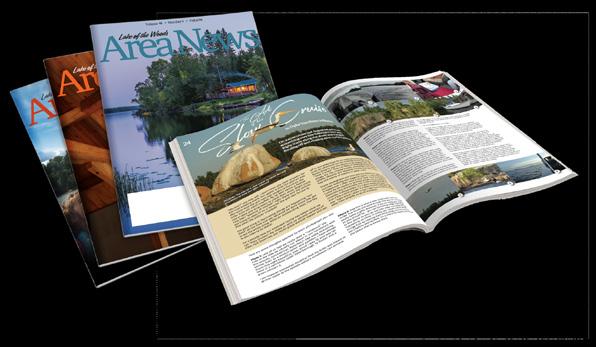






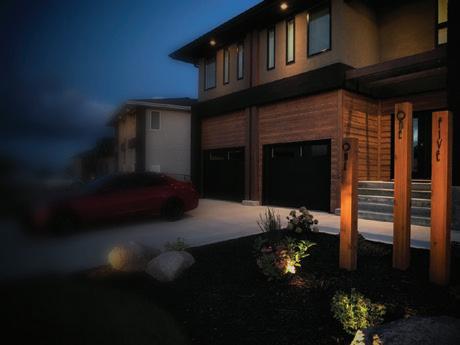

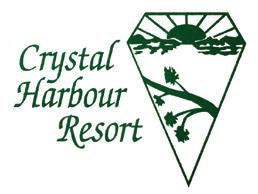





BY LORI NELSON
The summer of 1947 was drawing to a close and with it the camping season. This was particularly true for those whose summer places or vacation spots were located in communities along the Canadian National (CN) railway line, Redditt, Minaki, Ottermere, Wade, and Malachi.
The last run of the season by what was known as the Minaki Campers’ Special train was set for Monday, September 1.
Campers were prepping their cabins and properties for winter, while making some final memories at the lake that would hold them over until the next spring. The Pala Camp and Minaki Lodge were also closing for the season, so their guests were enjoying a last summer getaway.
It was a busy weekend, so busy that the CN had to put on an additional train to accommodate all the travellers heading back to Winnipeg. The first train left Minaki at around 6:30 p.m., followed an hour later by the Extra #6001.
Among the passengers on #6001 were members of the Dixon family—Grenville, Annie, Donald, Patricia and Merle—who had spent the weekend closing up camp at Malachi. Their sadness over the end of another summer was tempered by the excitement they had about the upcoming wedding of young Donald. Their house in Winnipeg was already decorated for the celebration.
John White, his brother and their friend Roy Pennington had spent the weekend at Pistol Lake, near Minaki. There was the Perron family, the Simpsons, the Mellors, the Adamses, the Steeles and others, bringing the passenger complement to 326.
Also travelling on the main CN line, but in the opposite direction, was the Continental Limited No. 4 passenger train (#6046), full of travellers heading east. It had come to a halt at the Dugald station,
waiting for the Campers’ Special to take the siding, and in doing so, allow the Continental, which had priority, to carry on its way to Toronto.
But the Campers’ Special didn’t take the siding, instead it powered through, rounding the S curve just east of Dugald, heading straight for the stationary #6046. The engineer tried to brake but it was too late. The crew on the Continental, seeing that the Special was not stopping, jumped to safety. The ensuing head-on collision, at 9:44 p.m., was so forceful that the two engines fused together. The steel cars of #6046 stayed on the tracks and suffered only minor damage like broken windows.
The Special, powered by the steam locomotive, had two steel baggage cars, nine wooden coaches lit by gas lighting, and two steel parlour cars with electric lighting. John White, a passenger, recalled that after he escaped from the wreckage, he saw that the baggage car, directly behind the locomotive, had stayed on the tracks. The second baggage car had derailed to the south. Three of the wooden coaches had been pitched off the tracks on the north side, while the fourth and fifth coaches stayed upright on the tracks. The sixth coach was toppled onto its side. The last three coaches and the parlour cars held to the track.
White’s friend, Roy Pennington, said that it was soon after the crash that he “saw flames from the gas lighting, rolling through the coaches like a fireball.” It was, in fact, fire that claimed most of the 31 lives that were lost in the accident, including the entire Dixon family. Only the engineer and the fireman were killed on impact. In addition, another 81 people were injured.
The residents of Dugald were the first on the scene, alerted to the crash by the noise, the steam shooting high into the sky, and the flames that engulfed not only the train coaches but also a nearby grain elevator and the Imperial oil depot.
Townsfolk were assisted in their rescue efforts by surviving passengers and passengers on the Continental. Signs and whatever was available were used as stretchers, and grain trucks were employed to take people to the hospital.
Neil “Chick” Edie, a survivor, said, “I remember my mother, Jenny, laying her fur coat on an injured couple who had been moved from the wreck on car doors. It was later learned that they were husband and wife. They were taken into Winnipeg in the back of a grain truck. I believe they both died. My mother’s coat never came back.”
Many of the injured were transported to the St. Boniface Hospital by car, ambulance and truck. The remaining passengers boarded the Continental, which was split and the latter half was shunted back to Union Station in Winnipeg.
On September 10, a funeral cortege of 22 hearses, 46 cabs carrying family members, and 18 other vehicles carrying RCMP, city police, CNR police, pall bearers and clergy made its solemn way from Cook’s Funeral Home in Transcona, around the Manitoba Legislative grounds, and then west along Portage Avenue to the Brookside Cemetery. Thousands lined the route to pay their respects.
Of the 31 people that were killed in the crash, only seven could be positively identified. Two bodies were never located. The remains of the other 22 were buried in a mass grave marked by a stone monument. As well, a heritage plaque was placed near the grave detailing the tragedy.
An inquiry into the crash was conducted by the Board of Transport Commissioners and was completed on October 18, 1947. Several contributing issues came to light as a result. The first was that the signaling system at Dugald was faulty. While the crew of the Special had been instructed to take the siding east of Dugald to clear the main line for the Continental, the rear brakeman claimed that the train’s order signal was green and gave it the right-of-way to the main line. This was corroborated by a passenger.
Another issue was the use of wooden coaches, which were being phased out at the time. However, because of steel rationing
during World War II, the old wooden cars had been kept in service until newer cars could be procured. Their arrangement between steel cars was noted as a hazard upon impact and it was recommended that, going forward, wooden cars should be placed only at the end of the trains. Because of the gas lighting which was serviced by compressed gas tanks under the coach, and the flammability of wood, the crash resulted in far more fatalities than would have occurred in the steel cars. The recommendation of the Commissioners was that the gas lighting be replaced with electric lighting.
In the end, blame was assigned to the crew of the Campers’ Special for not carrying out the order to take the siding. These were written orders that were received and acknowledged by the crew, and yet the train stayed on the main line as it came into Dugald. Secondly, the speed with which the train was travelling as it entered the yard exceeded CNR regulations. Trains were to slow to 8-10 mph so that they could either safely take the siding or stop. It was estimated that the Special came in at 30 mph, although some passengers were convinced that it was travelling even faster than that, upwards to 70 mph.
Survivors continue to tell the story of that horrific night. While some recall the exact spot where the trains met, others talk about how they got out safely and how they tried to help others. Others recall those who saved their lives. Others’ memories take them back to the destruction, the fire, the endless sirens, and the loss of lives.
Two other monuments have since been erected to commemorate those whose lives were so tragically lost. In August 1950, a cairn was built on Memorial Island at Malachi, Ontario by the Malachi Campers’ Association. All 27 passenger victims had a connection to Malachi. On September 1, 2007, to mark the 60th anniversary of the crash, the Springfield Women’s Institute unveiled a monument in Dugald.
This tragedy is counted among Canada’s worst train accidents.
Special thanks to Suzanne Langlois, Library Assistant, Kenora Library, for her efforts in helping us locate some of the additional archival photos from various sources.


